Inbox and Environment News: Issue 475
November 22 - 28, 2020: Issue 475
Parra'dowee Time
November-December
Goray'murrai—Warm and wet, do not camp near rivers
This season begins with the Great Eel Spirit calling his children to him, and the eels which are ready to mate make their way down the rivers and creeks to the ocean.
It is the time of the blooming of the Kai'arrewan (Acacia binervia) which announces the occurrence of fish in the bays and estuaries.
Acacia binervia, commonly known as the coast myall, is a wattle native to New South Wales and Victoria.
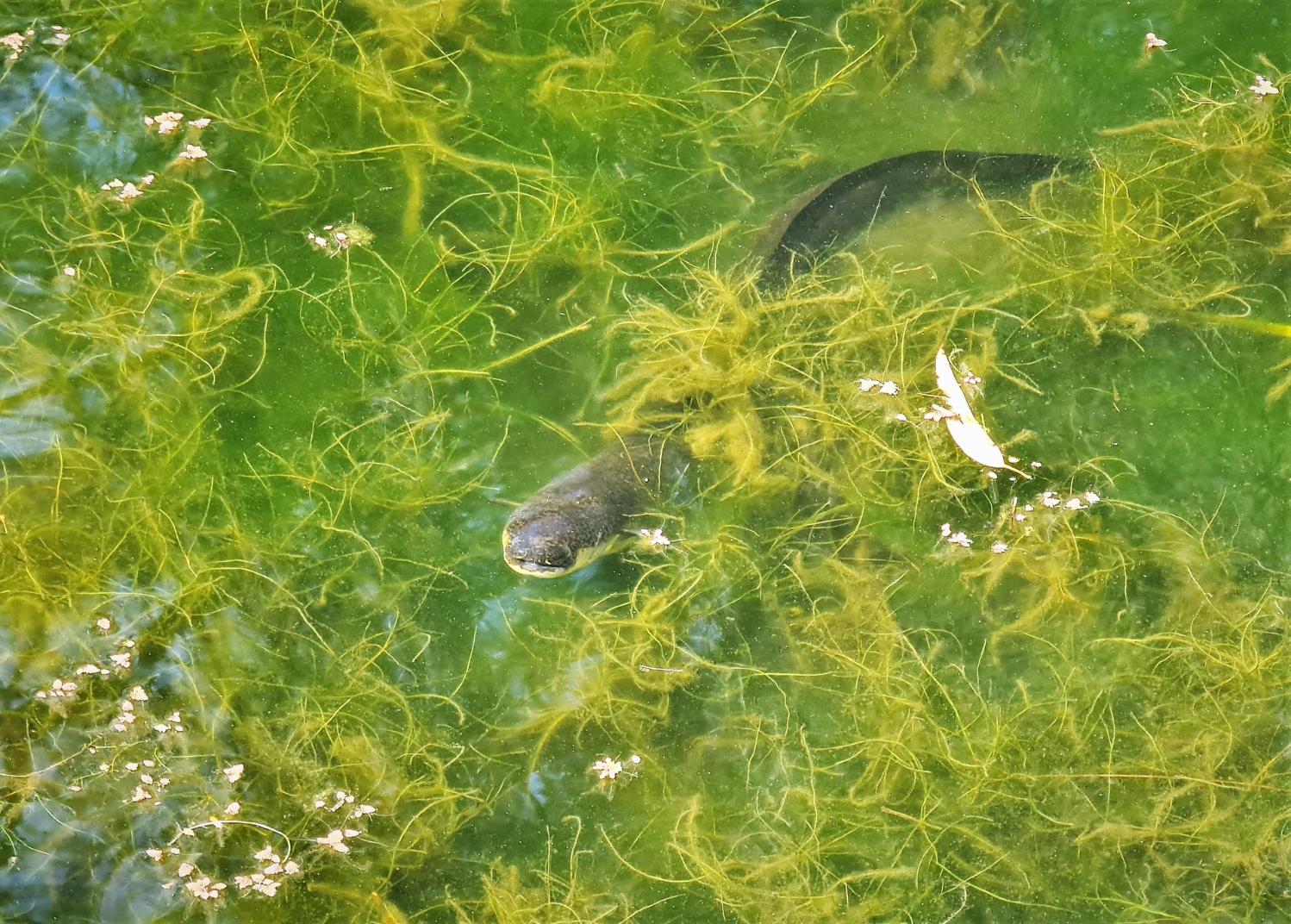
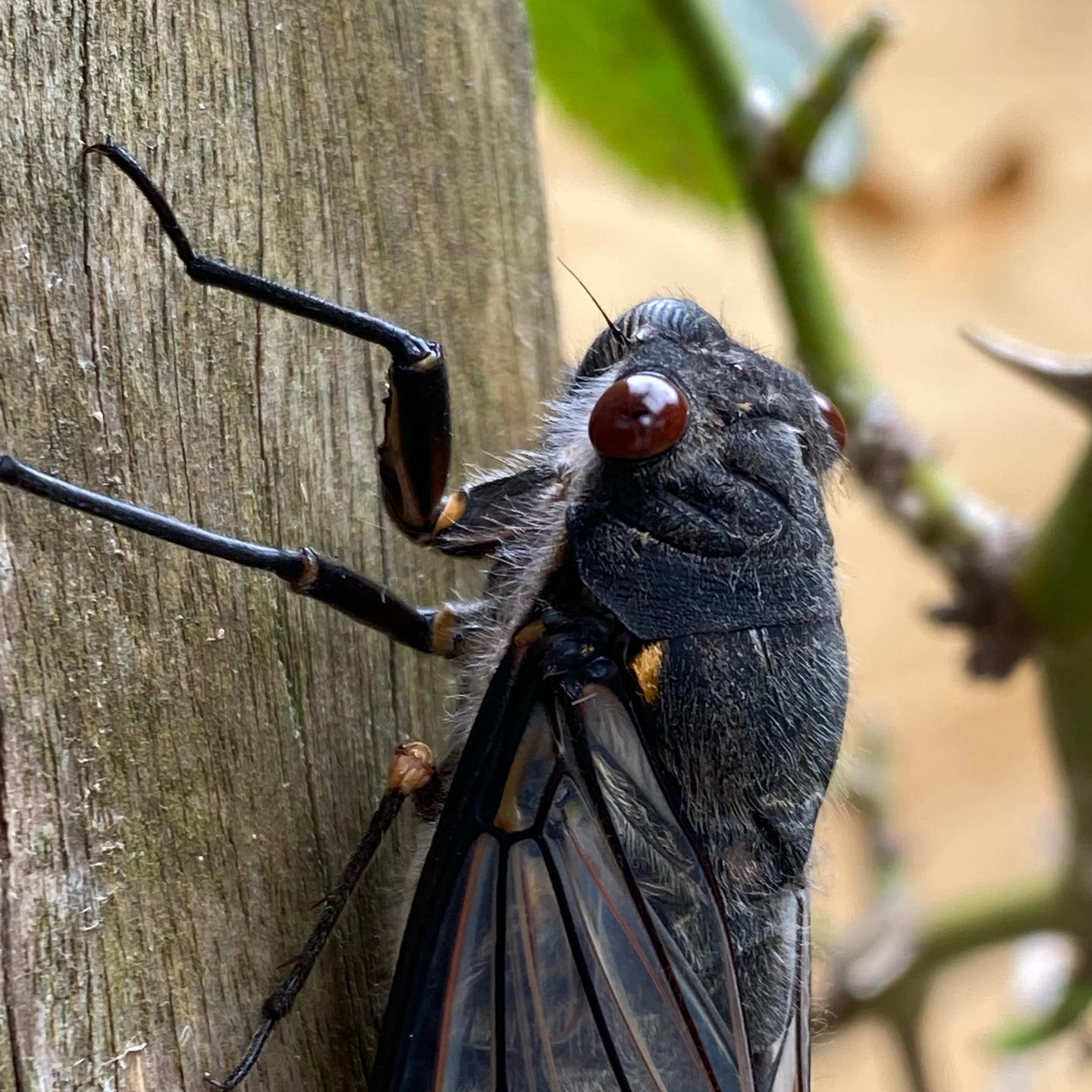
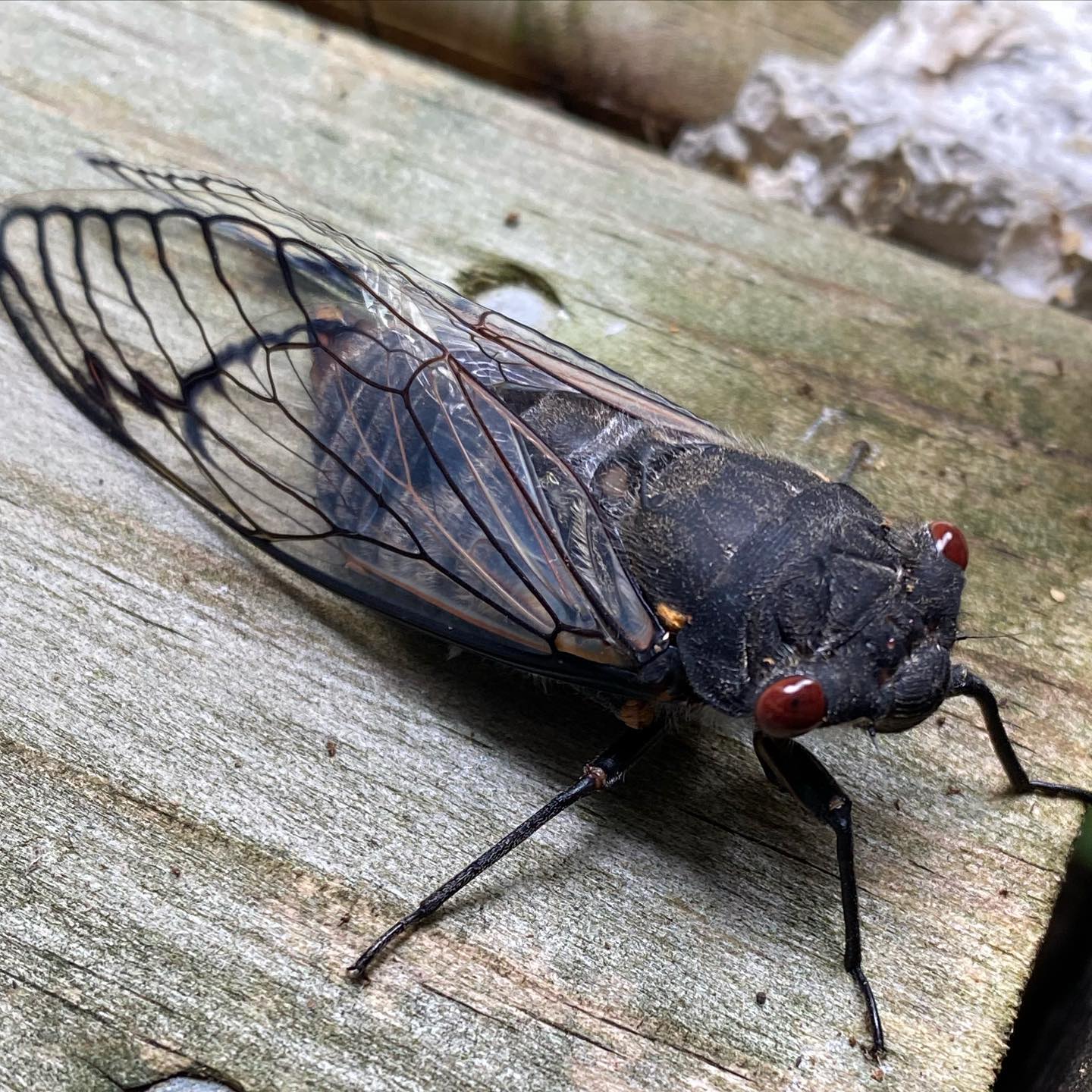
Black Prince Cicada, Psaltoda plaga, - at Elanora, November 20, 2020 - photos by Selena Griffith
.jpg?timestamp=1605953908045)
Caper White Butterfly, Elenois java, - photo by A J Guesdon, November 20, 2020
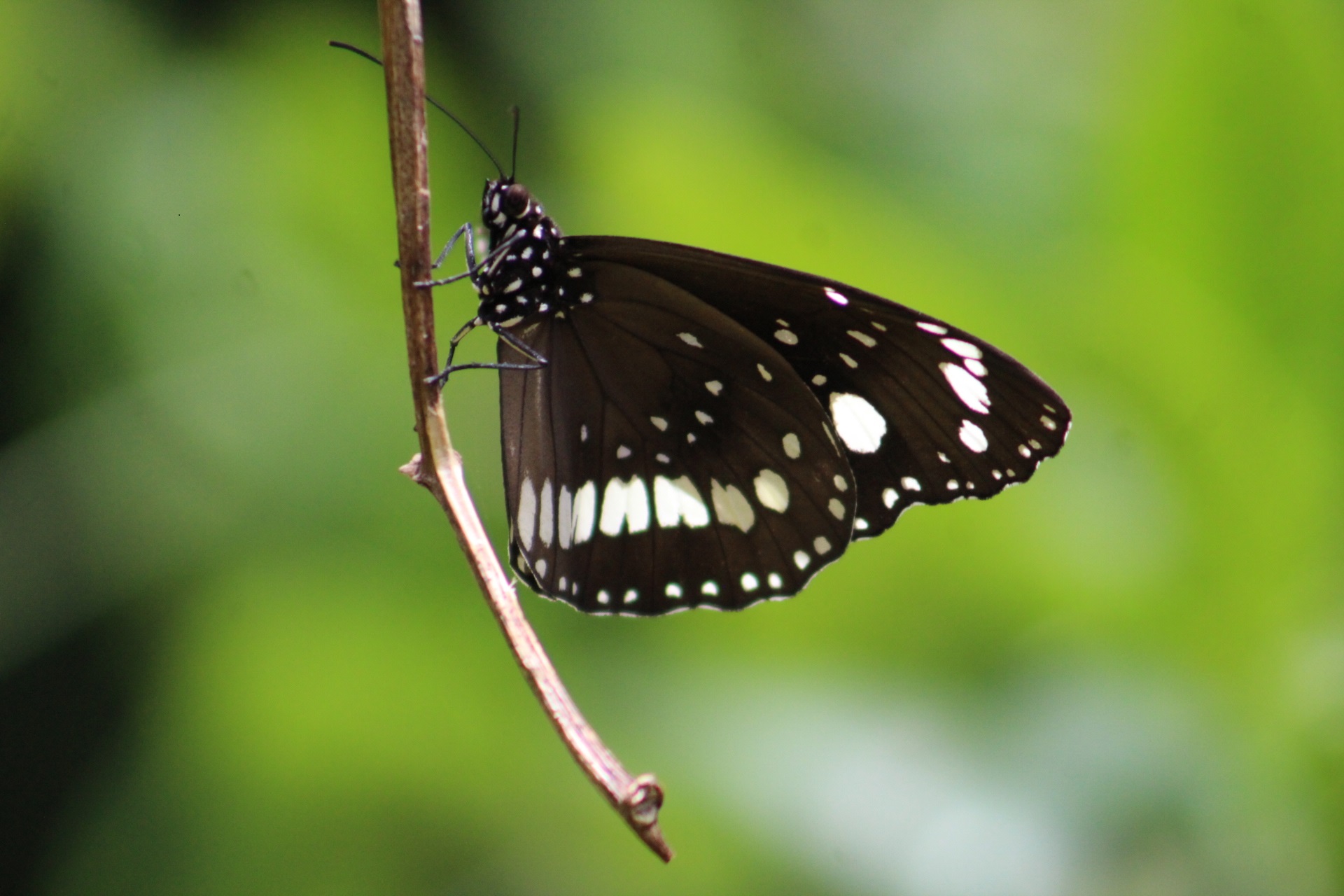
Australian Crow Butterfly, Euploea core corinna, November to May Distribution - photo by A J Guesdon, November 21, 2020
Watch Out On The Pittwater Estuary Water Zones & Beaches: Seals Are About
Residents have filmed and photographed the seals living at Barrenjoey as far south as Rowland Reserve and over at Clareville beach in recent days and ask that people keep an eye out for them and ensure they are kept safe from boat strikes and dogs are kept off the beaches they're not supposed to be on.
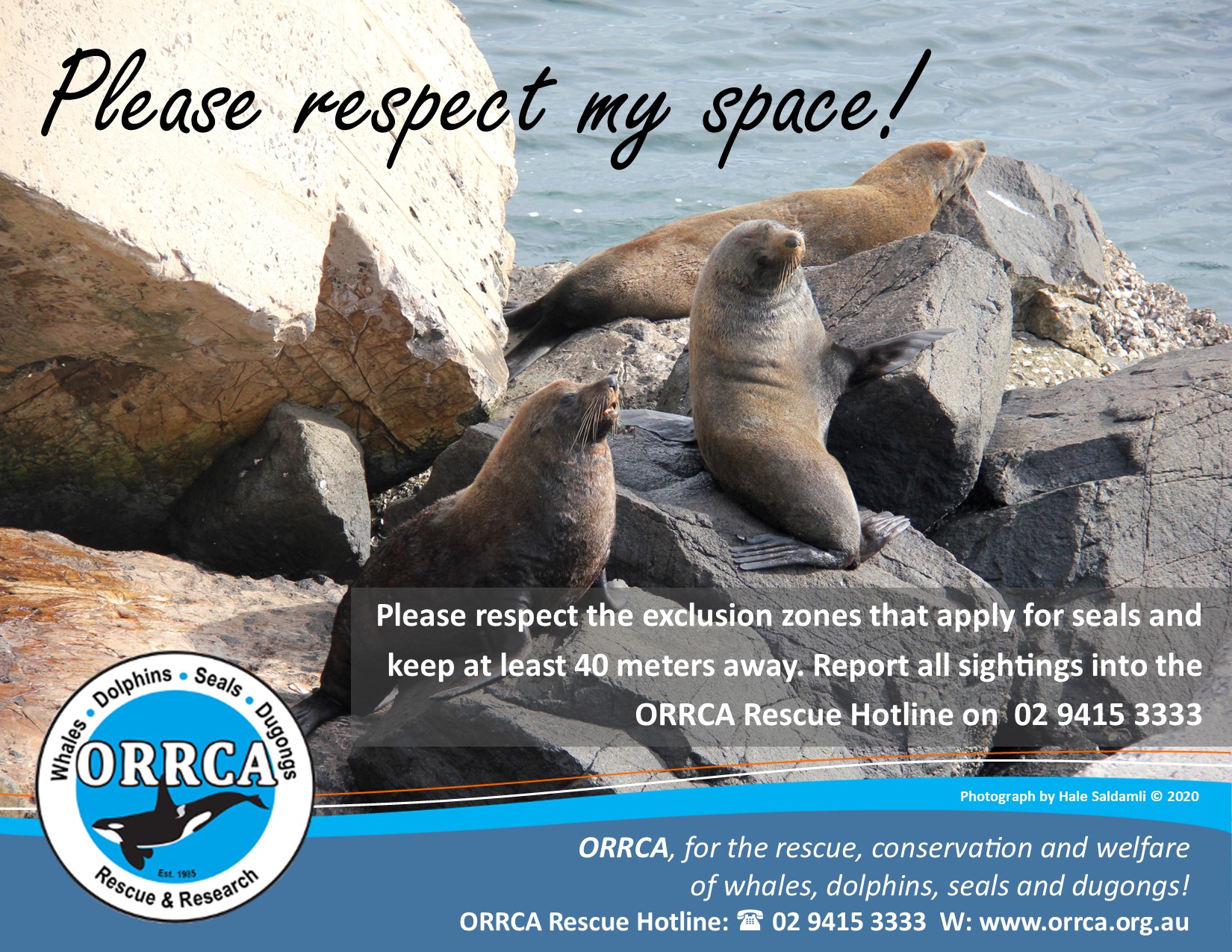
Can You Help Restore Our Environment? R&R Grants Open
Bushcare In Pittwater
Where we work Which day What time
Avalon
Angophora Reserve 3rd Sunday 8:30 - 11:30am
Avalon Dunes 1st Sunday 8:30 - 11:30am
Avalon Golf Course 2nd Wednesday 3 - 5:30pm
Careel Creek 4th Saturday 8:30 - 11:30am
Toongari Reserve 3rd Saturday 9 - 12noon (8 - 11am in summer)
Bangalley Headland 2nd Sunday 9 to 12noon
Bayview
Winnererremy Bay 4th Sunday 9 to 12noon
Bilgola
North Bilgola Beach 3rd Monday 9 - 12noon
Algona Reserve 1st Saturday 9 - 12noon
Plateau Park 1st Friday 8:30 - 11:30am
Church Point
Browns Bay Reserve 1st Tuesday 9 - 12noon
McCarrs Creek Reserve Contact Bushcare Officer To be confirmed
Clareville
Old Wharf Reserve 3rd Saturday 8 - 11am
Elanora
Kundibah Reserve 4th Sunday 8:30 - 11:30am
 Mona Vale
Mona Vale Mona Vale Beach Basin 1st Saturday 8 - 11am
Mona Vale Dunes 2nd Saturday +3rd Thursday 8:30 - 11:30am
Newport
Bungan Beach 4th Sunday 9 - 12noon
Crescent Reserve 3rd Sunday 9 - 12noon
North Newport Beach 4th Saturday 8:30 - 11:30am
Porter Reserve 2nd Saturday 8 - 11am
North Narrabeen
Irrawong Reserve 2nd Saturday 2 - 5pm
Palm Beach
North Palm Beach Dunes 3rd Saturday 9 - 12noon
Scotland Island
Catherine Park 2nd Sunday 10 - 12:30pm
Elizabeth Park 1st Saturday 9 - 12noon
Pathilda Reserve 3rd Saturday 9 - 12noon
Warriewood
Warriewood Wetlands 1st Sunday 8:30 - 11:30am
Whale Beach
Norma Park 1st Friday 9 - 12noon
Western Foreshores
Coopers Point, Elvina Bay 2nd Sunday 10 - 1pm
Rocky Point, Elvina Bay 1st Monday 9 - 12noon
Gardens And Environment Groups And Organisations In Pittwater
Support For Volunteer Wildlife Carers
The State's army of volunteer wildlife rehabilitators, and the vets who assist them, will be better supported to meet the demands of native animal rescue with the November 13, 2020 release of the NSW Volunteer Wildlife Rehabilitation Sector Strategy.
The 3-year plan to support and improve wildlife rehabilitation in New South Wales has in part been developed to incorporate the findings of the NSW Bushfire Inquiry.
Environment Minister Matt Kean said wildlife rehabilitators rescue about 100,000 animals every year and even more in times of crisis.
"Our army of volunteer wildlife rehabilitators worked tirelessly in last summer's catastrophic bushfires, rescuing countless wildlife, including our precious koalas," Mr Kean said.
"Without their commitment, dedication and responsiveness our sick and injured native animals would not have survived."
The NSW Government has already committed $6.52 million to implement the strategy statewide.
Key elements include:
- consistent standards of operation for the sector
- improved support for local groups and volunteers
- better training for veterinarians to assist native wildlife
- a system of accreditation to replace the current licensing of volunteer wildlife rehabilitation groups.
Additionally, codes of practice for animal care will be enhanced along with training standards for rehabilitators and changes to the policy framework to give people more choice about which group they can join.
"Often working in challenging and confronting circumstances, these volunteers can bear significant personal cost and stress," Mr Kean said.
"We want volunteers to feel prepared, understood and respected while also equipping them with the necessary skills and resources to perform their crucial role."
The NSW Volunteer Wildlife Rehabilitation Sector Strategy 2020-2023 is available to download.
Embargo On In-River Dams: Ourimbah And Jilliby Jilliby Creeks
November 20, 2020
The NSW Department of Planning, Industry and Environment today announced an embargo on in-river dams within the Ourimbah Creek and Jilliby Jilliby Creek water sources.
Emma Solomon, Executive Director Policy, Planning & Sciences, said the embargo will apply to all approvals for a dam within a third order or higher stream within these catchments.
“The temporary embargo applies from today and will last for up to two years or until the water sharing plan for the Central Coast Unregulated Water Sources 2009 is replaced which is expected to be 1 July 2021,” Ms Solomon said.
“A risk assessment recently completed by the department identified that the Jilliby Jilliby Creek and Ourimbah Creek water sources have very high environmental values that are at high risk from water extraction in these catchments.
“This prohibition exists in the other surface water sources within the Central Coast area and this embargo brings Jilliby Jilliby Creek and Ourimbah Creek in line with these other water sources,” said Ms Solomon.
The permanency of this restriction will be discussed during the public exhibition phase of the replacement Central Coast Unregulated and Alluvial Water Sharing Plan, which is scheduled to commence on 30 November 2020.
Further details relating to the embargo are available at: Government Gazette of the State of New South Wales Number 323-Electricity and Water
Young NSW Fishers Launch New Business Podcast
Young commercial fishers, oyster farmers, and aquaculturists will share how they work and run their businesses in the new podcast, The Business of Fishing, commencing on Thursday 19th of November.
Covering eight coastal, river and inland locations around NSW, the podcast highlights some of New South Wales’ most inspiring young commercial fishers, oyster farmers and aquaculturists who are succeeding in their industry and have reinvented parts of their businesses as a result of the challenges faced by COVID-19.
The Business of Fishing focuses on the business aspects behind the scenes, not in the boat. With a diverse range of businesses, ranging from open catch fishing to oyster farming, and all the way to inland breeding of Murray Cod.
The eight episodes will cover topics such as management of income and expenses, how technology can help you work smarter, not harder, the challenges of wanting a family and a career, and adapting your business model to meet the market.
Team leader of the Young Farmer Business Program, Alexandra Hicks said the podcasts are a great way for young people to reach other young people who may be geographically dispersed or isolated.
“This podcast is made by young fishers in NSW, who are telling their stories, told in their voices. They share their journeys and it’s a very inspiring series for young fishers,” Ms Hicks said.
“It’s a really powerful way to learn – from other people just like you. This is the first podcast like this, we are very excited to launch this great informative series!”
The podcast has been created by the NSW Department of Primary Industries Young Farmer Business Program who are thrilled to feature a selection of hard working and ambitious fishers, oyster farmers and aquaculturists across New South Wales.
Weekly speakers and topics include:
- Danny Green Coffs Harbour, Wild harvest
- Jack Salt Pambula, Oysters
- Troy Billin Yamba, Wild harvest
- Jason Georgoulis Sydney, Wild harvest
- Matt Ryan Bilbul, Aquaculture
- Ewan & Bella Bale Port Macquarie, Oysters
- Lucas Ashley Port Stephens, Oysters
- Alex Tucker Hawkesbury, Wild harvest
A new podcast of The Business of Fishing is available each week, over the next eight weeks, download for free via Google Podcasts, the Apple Podcasts and YouTube.
For more information visit www.youngfarmer.nsw.gov.au
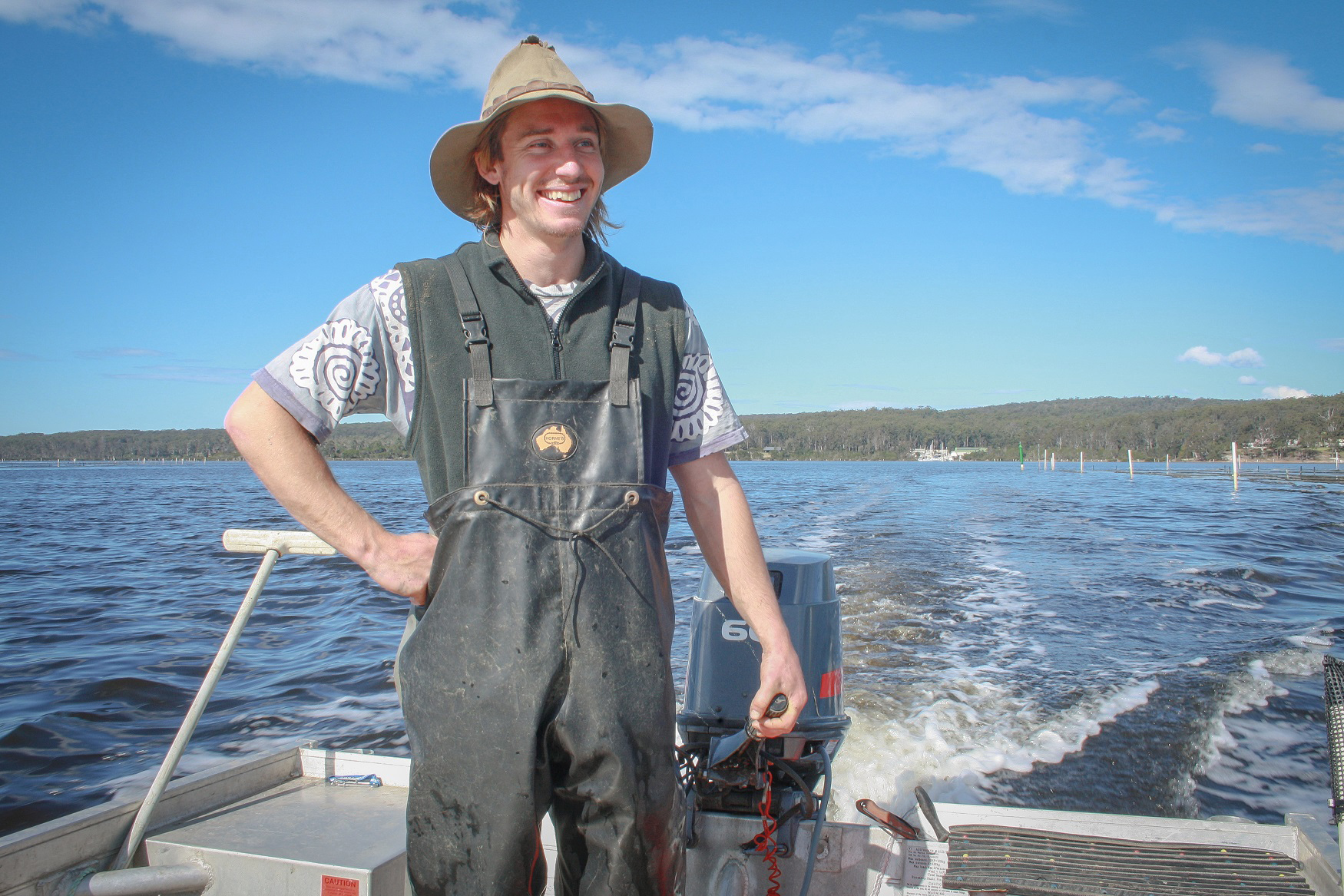
Jack Salt, oyster farmer, Pambula
Grants To Fund Innovative Re-Use And Recycling Projects
The NSW Environment Protection Authority (EPA) is calling for innovative and new projects looking for ways to re-use discarded materials to make new products or for new uses, and for construction projects that want to re-use materials like construction waste, glass or plastic, to apply for new grants to help create a circular economy.
New intakes for the EPA’s Circulate and Civil Construction Market Programs are now open and aiming to divert valuable materials from landfill for re-use, recycling and industrial ecology projects.
The grant funding helps organisations including businesses, councils, not-for-profits, waste service providers and industry bodies, among others, design projects that promote the circular economy, instead of a disposable culture.
EPA Director Circular Economy Programs Kathy Giunta said these programs will provide grant funding to support industry to respond to the decision by the Council of Australian Governments (COAG) this year to ban the export of certain wastes that have not been processed into value-added material.
“One of the ways to mitigate the effects of China’s National Sword policy and to prepare NSW for the waste export ban is to invest in projects that demonstrate innovative uses of recyclables,” Ms Giunta said.
“The Circulate Program provides grants of up to $150,000 for innovative, commercially-oriented industrial ecology projects. Circulate supports projects that will recover materials that would otherwise be sent to landfill, and to instead use them as feedstock for other commercial, industrial or construction processes.
“The Civil Construction Market Program provides grants of up to $250,000 for civil construction projects that re-use construction and demolition waste or recyclables from households and businesses such as glass, plastic and paper.”
Previous projects in the Circulate Program include Cross Connections’ Plastic Police, which supplied soft plastics to the Downer Group’s Reconophalt project, the first road surfacing material in Australia to contain high recycled content from waste streams, also including glass and toner, which would otherwise be bound for landfill or stockpiled.
Previous projects in the Civil Construction Market Program include supporting Lendlease’s use of recycled glass from Lismore Council in pavement concrete on three trial sites as part of the Woolgoolga to Ballina Pacific Highway Upgrade.
Applications will be open until Friday 12 February 2021.
For details of the grants and how to apply, visit epa.nsw.gov.au/circulate and epa.nsw.gov.au/working-together/grants/business-recycling/civil-construction-market-program-grants
Keep Australia Beautiful NSW Award Winners Announced
November 19, 2020
NSW Environment Protection Authority CEO Tracy Mackey today congratulated all the winners at the Keep Australia Beautiful NSW 2020 Sustainable Cities Awards.
The awards recognise, celebrate and reward the sustainability initiatives of NSW metropolitan councils, businesses and community groups and are organized by Keep Australia Beautiful NSW.
Ms Mackey said the awards were deserved recognition for those promoting sustainable practices through innovative ideas.
“There are a wide variety of winners in a number of categories who have left their mark with unique ideas and have brought a positive influence to various communities. Their hard work is very much appreciated and the awards greatly deserved.”
Ms Mackey praised the variety of awards including the Don’t be a Tosser Litter Action Award which was awarded to Seaside Scavenge and the Waste Less Recycle More Award which went to joint winners Auburn Hospital Recyclers and Sutherland Shire Council.
Also among the winners was Cans for Kids led by 25-year-old Auburn resident Alexander Roberts, who works with Auburn Hospital staff to collect eligible bottles and cans from the hospital to recycle through Return and Earn.
The container refunds are used to support international charity Save the Children, with every 20 containers returned paying enough to vaccinate a child for life.
Ms Mackey said the work of Alex and Auburn Hospital was truly inspiring, demonstrating the incredible impact we can all have on our environment as well the community through our actions.
“Congratulations Cans for Kids. Not only are you helping thousands of children overseas access important medical care, but you’re also helping the environment,” Ms Mackey said.
Alex began collecting cans to raise money for children’s charities 13 years ago when he was in primary school.
He has worked closely with Auburn Hospital, especially the cleaning staff, who helped ensure that all eligible drink containers at the hospital are recycled. Currently, the container refunds provide approximately $150 per month to Save the Children.
Cans for Kids has also expanded with local businesses, social groups, sporting teams, churches, and even hospital patients and their families contributing containers.
To learn more about Keep Australia Beautiful NSW programs and future events please visit: www.kabnsw.org.au
Sydney Water Sentenced Over Lane Cove Sewage Pollution
Sydney Water has been convicted and penalised a total of $145,000 over sewage pollution in the Lane Cove National Park and Lane Cove River, following prosecution by the NSW Environment Protection Authority.
In the NSW Land and Environment Court in early November, Justice Pain convicted Sydney Water for one water pollution offence and one offence of breaching its Environment Protection Licence. Sydney Water pleaded guilty to the offences.
In July 2018, around 64,000 litres of untreated sewage overflowed from a maintenance point in Lane Cove National Park at North Epping and was subsequently flushed into nearby bushland, a local creek and the Lane Cove River, as Sydney Water technicians attempted to clean-up the discharge.
Instead of removing the sewage that remained in the bushland and creek, Sydney Water washed the raw sewage into the Lane Cove River.
Due to failures in Sydney Water’s instructions and communication with staff, the clean-up of the remaining raw sewage in Lane Cove National Park was not completed for more than three weeks.
Justice Pain said “Sydney Water could reasonably have foreseen the likelihood of harm and greater risk to human health (both unquantifiable) of opening the mains water valve on 29 and 30 July 2018, before adequate clean-up took place.”
Justice Pain also said “The prolonged failure to clean up over a three week period giving rise to the Licence Offence was unsatisfactory to say the least”. Her Honour also said the failure to clean up adequately continued for a lengthy period and occurred only when Sydney Water was prompted by the EPA to do so.
Sydney Water was ordered to pay $127,000 of the $145,000 penalty to the Lane Cove National Park Bush Regeneration Project. It was also ordered to pay the EPA’s investigation costs of $24,369 plus legal costs and to publicise its convictions in newspapers and on social media.
More Than $1 Million Allocated In Grants To Tackle Local Litter
November 20, 2020
The NSW Government has announced the successful applicants of $1 million in grants to tackle litter in their local areas.
NSW Environment Protection Authority Executive Director Liesbet Spanjaard said all applicants in local communities across the state who applied for the two NSW Government litter grants, including tackling cigarette butts, were to be commended.
A total of $1.1 million – comprising $600,000 for Round 6 of the Community Litter Grants and $500,000 for the inaugural Cigarette Butt Litter Prevention Grants – will be provided to councils, community groups and organisations to implement litter prevention projects in their areas.
Ms Spanjaard said the Cigarette Butt Litter Prevention Grants were a new and exciting opportunity to fund projects that work with stakeholders to deliver local cigarette butt litter prevention projects and reduce litter.
“Cigarette butts are consistently the most littered item in NSW every year. I hope local communities can set a great example for innovative projects to help reduce the millions of butts littered each year and by doing so, clean up our environment.”
Ms Spanjaard said that previous litter prevention grant programs had seen some impressive results to date and was confident the successful applicants would achieve similar results.
“More than 200 projects have been funded so far under the litter prevention grant program with incredible results – some projects have recorded up to 80 per cent reduction in litter in their targeted hotspot,” Ms Spanjaard said.
“It is excellent to see grants awarded to a variety of groups and councils that will enable action to be taken to keep our suburbs clean.”
More information about the successful applicants and NSW EPA Litter Grants program is available at:
https://www.epa.nsw.gov.au/working-together/grants/litter-program/community-litter-grants and https://www.epa.nsw.gov.au/your-environment/litter-and-illegal-dumping/epa-work-prevent-litter/reducing-cigarette-butt-litter
Round 6 program
Grant funding for round 6 was available in two streams.
Stream 1: On-Ground litter prevention projects - $4,000 to $40,000
- For groups who want to act on a locally identified litter issue at one or more locations
- Projects in this stream will use proven methods of litter prevention to support the motivation of the community group to reduce litter.
Stream 2: Own It and Act partnership projects - $50,000 to $90,000
- Projects in this stream will be longer-term strategic state or regional litter prevention initiatives that may not be site-specific.
- Projects must demonstrate how they build leadership and capacity of community groups to deliver ongoing litter prevention outcomes.
- Projects in this stream must align with and support the Own It and Act strategic framework developed by the DPIE Litter Prevention Unit.
Round 6 recipients – Stream 1
Organisation - Amount - Project summary
Canterbury City Community Centre $15,000 Lakemba Tackles Takeaway Litter
This project aims to address littered takeaway packaging items and littering from motor vehicles at four hotspot locations including Lakemba town centre, a local primary school, community park and popular picnic area. Utilising community leaders and local community groups, Canterbury City Community Centre aims to engage with the local CALD community to promote responsible disposal of rubbish whilst engaging the support of Canterbury Bankstown Council to enforce littering fines and promotion of the NSW EPA's Report littering from vehicles program.
Dharriwaa Elders Group $35,000 Keep Our Rivers Clean
Located on the Namoi and Barwon River, this project focuses on education and shifting attitudes within the local Indigenous community about the impact of litter on the local environment and the need for urgent action to protect the community's river system and lifesource. The initiative seeks to reduce litter by 50% at sites along the Barwon River by 2021, incorporating key litter prevention mechanisms including clean ups and infrastructure. A key element of the campaign will be education, which will be focussed on the voices of Aboriginal Elders who hold the cultural authority for shifting behaviours towards Caring for Country. The Dharriwaa Elders Group, in partnership with UNSW, will evaluate the program's effectiveness through an ongoing behaviour change initiative.
Greenacre Community Centre $28,425 Keep Greenacre Clean & Green
Led by a subcommittee called the "Greenacre Clean & Green Team" this project will take an integrated approach to reducing litter and littering behaviours in Greenacre and address the significant litter issue at a community car park on Waterloo Road. In addition to new bin infrastructure and CALD community signage, the Community Centre will partner with Canterbury-Bankstown City Council to deliver workshops aimed at educating the community on littering with a regular pop-up stall at the carpark to provide an on-ground presence for promoting the carpark as a clean community space.
Raymond Terrace Lions Club $6,500 Clean Up Fitzgerald
Engaging closely with Port Stephens Council and Raymond Terrance Men's Shed Fishing Group, this project aims to address litter at a popular boat ramp and picnic area. The project will install new bins and additional Don't Be A Tosser! signage in conjunction with regular contact with locals to promote the area as litter-free environment.
Wangarang Industries $10,005 Highway Litter Prevention
The aim of this project is to reduce the amount of litter being thrown from cars, trucks and other vehicles using the Northern Distributor leading into Orange. To achieve this, Wangarang Industries will partner with Orange City Council to install Tosser! signage as well as VMS roadside signage during peak season to communicate the NSW EPA's Report littering from vehicles program. In addition the project partners will engage with Northern Distributor Businesses to communicate to customers to responsibly dispose of rubbish, with the Orange City Council Rangers assisting by patrolling the site over the project period.
Round 6 recipients – Stream 2
Organisation - Amount - Project summary
Jindabyne Chamber of Commerce $75,300 Sustainable Snowies Litter Prevention Strategy
This project aims to better understand the contributing factors to litter across Jindabyne and the Snowy Mountains as part of a litter prevention pilot strategy to reduce litter by 50% by 2025 in the region. The project will be led by a Litter Prevention Project Officer who will trial and refine the strategy, engaging with a diverse stakeholder group to develop a toolbox of resources for regional litter prevention plans. At the conclusion of the project, member organisations will establish targets and commit resources to systematically reduce litter using evidence-based approaches, ensuring long term coordinated litter prevention outcomes across the Snowy Mountain region.
OceanWatch $71,300 Litter Free Estuaries Pilot
Working closely with community groups, land managers and estuary users, this project aims to pilot a litter prevention initiative in Brisbane Water to reduce the amount of litter by 50% at typical estuary litter hotspot locations. At the conclusion of the pilot, OceanWatch aims to develop a Litter Prevention Strategy which will be disseminated to communities, water users and local councils surrounding 22 NSW estuaries, to raise awareness of local litter issues, train key stakeholders in proven litter prevention strategies and establish a foundation for future litter prevention initiatives within the seafood and other estuary-based businesses.
River Canoe Club of NSW/Cooks River Alliance $90,000 Cooks River Litter Prevention Strategy
The River Canoe Club of NSW, in partnership with the Cooks River Alliance and key community stakeholders, aims to develop a comprehensive and collaborative litter prevention strategy to reduce 50% of litter entering the Cooks River by 2025.
To achieve this, a series of community-led pilots will be carried out, including clean-ups, community awareness and education initiatives focused on litter prevention and coordinated with land managers. At the conclusion of the project the leaning from the pilots with be synthesised into a strategic plans for partners to adapt, to achieve sustained long term litter reduction in the Cooks River.
Sydney Coastal Councils Group/Parramatta River Catchment Group $90,000 Greater Sydney Harbour Litter Prevention Strategy
Working with community groups and member councils, this project aims to develop a Regional Litter Prevention Strategy to reduce the amount of litter entering the Parramatta River and Sydney Harbour by 50% by 2025. The project will be implemented by employing a Community Project Delivery Officer to pilot litter prevention strategies in three council areas, developing a 'proof of concept' model that involves community education and involvement, as well as embedding litter prevention policies and commitments into council planning and strategy. At the conclusion of the project, the Sydney Coastal Councils Group, in partnership with the Parramatta River Catchment Group, seeks to incorporate the evidence-based litter prevention strategy into all member councils' efforts to achieve long term litter prevention in Parramatta River and Sydney Harbour.
Take 3 For the Sea $89,103 First Wave: NSW Tourism Industry Pilot Program #Take3forNSW
Working in consultation with National Parks & Wildlife Services (NPWS), Destination NSW and key tourism stakeholders, Take 3 will pilot a Litter Prevention Strategy at 3 tourist locations around the state, to analyse the key factors contributing to litter and trial litter prevention strategies in consultation with the tourism industry to reduce litter at hotspots by 50%. At the conclusion of the project, Take 3 will develop an online toolkit based on the proof of concept pilots, to engage with licenced tourism operators and tourism stakeholders to systematically address tourism-generated litter. The ownership of litter prevention will be underpinned by a litter prevention certification program for tourism operators.
Total Environment Centre $90,000 AUSMAP - Developing and Testing a Framework for Microplastic Litter Reduction in NSW
Building on their pilot for reducing litter and microplastics in a single catchment area, AUSMAP will expand the scope by partnering with Macquarie University and Southern Cross University to form the evidence base for a flexible step-by-step rapid response approach for reducing macro and micro litter regionally at the local government level. The litter reduction pilot will be trialled in three diverse regions: an inland farming catchment (Central West NSW), a tourist coastal catchment (Far North NSW) and an urban city catchment (Cooks River Sydney) utilising the Australian Microplastic Assessment Project (AUSMAP) tools to deliver outcomes set out under NSW EPA Litter Prevention Strategy.
NSW DPI: Vaccinate Now To Protect Livestock From Anthrax
November 19, 2020
The NSW Department of Primary Industries (DPI) and Local Land Services (LLS) have urged farmers to vaccinate cattle and sheep against anthrax, to prevent the disease which can kill livestock.
DPI senior veterinary officer, Graham Bailey, said anthrax is unpredictable and affected stock often show few or no signs of ill health before they die.
“Annual vaccination should be considered on high-risk properties as anthrax can lie dormant in the soil for decades,” Dr Bailey said.
“High-risk properties include those where anthrax has been detected and nearby properties.
“In NSW, anthrax tends to occur in an area which runs through the centre of the state between Bourke and Moree in the north, to Albury and Deniliquin in the south.”
Farmers can contact LLS to obtain specific advice for their properties.
Vaccination prevents anthrax, which is caused by the bacterium Bacillus anthracis, from occurring and breaks the cycle of spore production to reduce the risk of anthrax occurring in the future.
When vaccination is conducted on an annual basis, spores in the environment die.
The last case of anthrax detected in NSW was in January 2020.
LLS Animal Biosecurity and Welfare business partner, Scott Ison, said farmers can apply to use the anthrax vaccine through their LLS district veterinarian.
“Once authorised applicants can place an order for the vaccine with their local rural supplier or private veterinarian,” Dr Ison said.
“Farmers should suspect anthrax as a possible cause if animals die suddenly. There may be no signs and the disease can begin with sporadic deaths of single animals over a few days before building to dramatic losses in a very short time.
“Cases of sudden death in livestock are regularly investigated by LLS and private veterinarians and in most cases anthrax is excluded as the cause.”
Anthrax, a notifiable disease which must be reported immediately to the Emergency Animal Disease Hotline by calling 1800 675 888, is listed as prohibited matter under the NSW Biosecurity Act.
Information about preventing anthrax is available on the DPI website or from LLS, 1300 795 299.
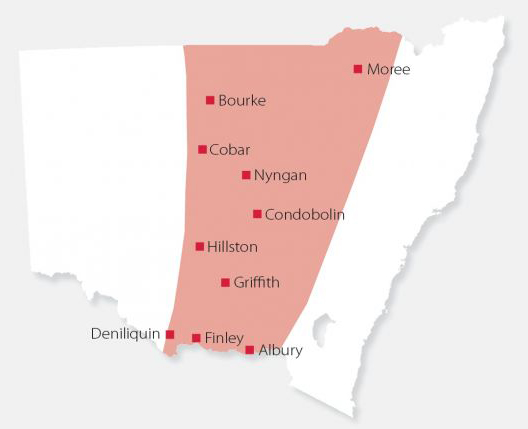
In NSW, anthrax tends to occur in an area which runs through the centre of the state between Bourke and Moree in the north, to Albury and Deniliquin in the south.
Ships moved more than 11 billion tonnes of our stuff around the globe last year, and it’s killing the climate. This week is a chance to change
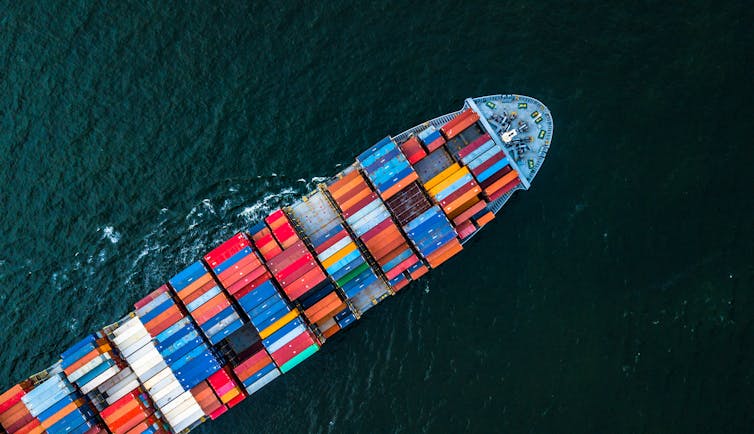
The shipping of goods around the world keeps economies going. But it comes at an enormous environmental cost – producing more CO₂ than the aviation industry. This problem should be getting urgent international attention and action, but it’s not.
This week, all 174 member states of the International Maritime Organisation (IMO) will discuss a plan to meet an emissions reduction target. But the target falls far short of what’s needed, and the plan to get there is also weak.
As other industries clean up their act, shipping’s share of the global emissions total will only increase. New fuels and ship design, and even technology such as mechanical sails, may go some way to decarbonising the industry – but it won’t be enough.
It’s high time the international shipping industry radically curbed its emissions. The industry must set a net-zero target for 2050 and a realistic plan to meet it.
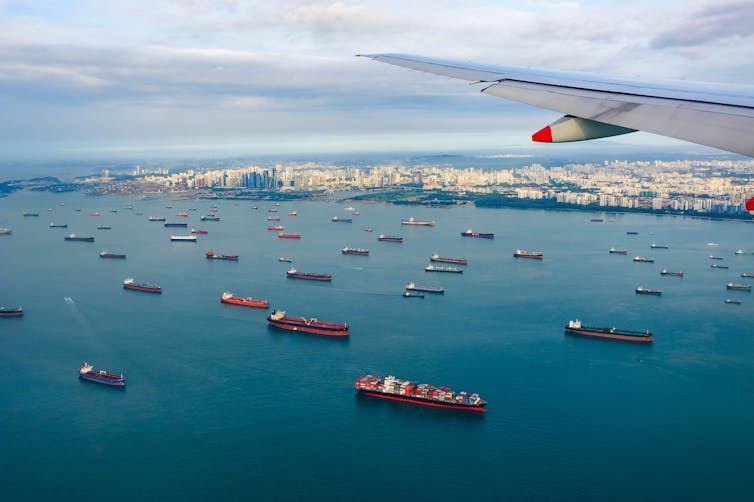
Shipping: By The Numbers
Globally, more than 50,000 merchant ships ship about 11 billion tonnes of goods a year. In 2019 they covered nearly 60 trillion tonne-miles, which refers to transporting one tonne of goods over a nautical mile.
Per tonne-mile, carbon dioxide emissions from shipping are among the lowest of all freight transport options. But in 2018, shipping still emitted 1,060 million tonnes of CO₂ – 2.89% of global emissions. By comparison, the aviation industry contributed 918 million tonnes of CO₂, or 2.4% of the total.
And as international trade increases and other sectors decarbonise, global shipping is expected to contribute around 17% of human-caused emissions by 2050.
An Emissions Pariah
The IMO, which regulates the global shipping industry, did not set meaningful emissions reduction targets until April 2018. This is despite being requested to reduce emissions as far back as 1997 under the Kyoto Protocol.
The IMO has pledged to halve shipping emissions between 2008 and 2050 while aiming for full decarbonisation. By 2030, the carbon intensity (or emissions per tonne-mile) of individual ships should fall by 40%, compared with 2008 levels.
The IMO’s Marine Environment Protection Committee, is devising binding rules for the industry to achieve these emissions goals. Draft measures being considered this week focus solely on reducing the carbon intensity of individual ships. The plan has been slammed by critics because emissions reductions are not in line with Paris Agreement commitments of limiting global warming to 1.5℃ or 2℃ by 2100.
Read more: The shipping sector is finally on board in the fight against climate change
There are two main issues with the 40% emissions intensity target.
First, it’s not ambitious enough. Research suggests limiting warming to 1.5℃ requires the shipping industry to reach net-zero emissions. Merely reducing the carbon intensity of ships will barely make a dent in current emissions. Worse, even the best-case scenario will likely lead to a 14% emissions increase compared to 2008.
Second, the IMO has yet to say how it will meet its targets. The plan up for discussion this week is weak: not least because it lacks enforcement mechanisms.
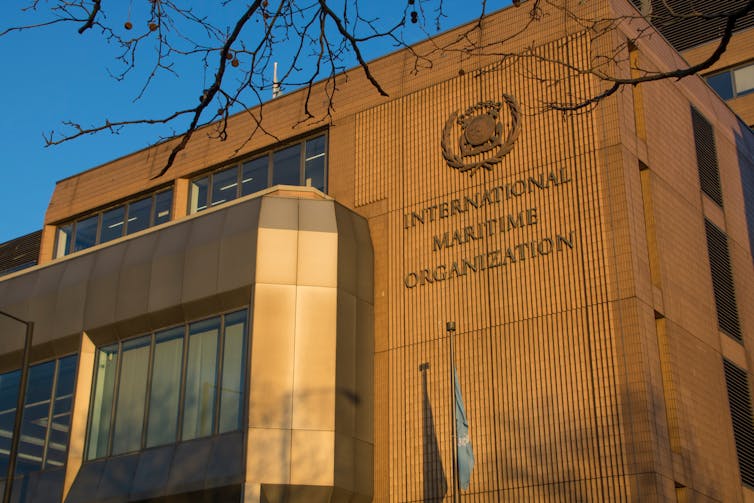
So How Do We Fix The Problem?
Earlier this year, I sailed on the Avontuur. This 100-year-old two-masted schooner under German flag sailed from Germany to the Caribbean and Mexico to load 65 tonnes of coffee and cacao, then ship it under sail to Hamburg.
The round-trip took more than six months and 15 crew members. Roughly 169 million ships like the Avontuur would be needed to transport the 11 billion tonnes of goods moved by sea each year. It would require 2.5 billion crew, compared with 1.5 million today. Clearly, that is not realistic.
So how, then, do we solve the international shipping problem? Clean transport advocates say we must reduce demand for cargo transport by using what’s locally available, and generally consuming less and moving to a post-growth economy.
Read more: Plain sailing: how traditional methods could deliver zero-emission shipping
Some scientists concur, arguing either carbon intensity or shipping demand must come down – and probably both.
Ships can significantly reduce their emissions simply by slowing down. Carbon emissions increase exponentially when ships travel above cruising speed. But the industry seems unwilling to pick this low-hanging fruit, perhaps because it would compromise just-in-time supply chains.
Ships commonly burn huge amounts of heavy fuel oil. Emerging fuels, such as hydrogen and ammonia, have the potential to cut emissions from ships. But producing these fuels may create substantial emissions, and adopting new fuels would require building new ships or retrofitting existing ones.
Existing vessels can also be retrofitted with more efficient propulsion mechanisms. They could also be fitted with wind-assist technologies such as sails, rotors, kites, and suction wings. Research suggests these technologies could reduce a ship’s emissions by 10–60%.
And new designs for sail-powered cargo vessels are emerging. But these ships are yet to be built and it may be a long time before they are widely used.
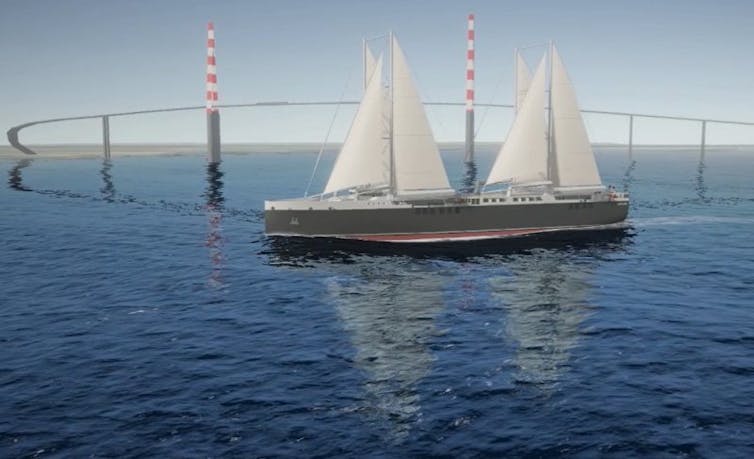
Looking Ahead
Technological solutions on their own will not bring the necessary emissions reductions. New technologies must be embraced immediately, and ambitious regulation is necessary. Industry and consumer demand for shipped goods must fall as well.
Earth’s remaining carbon budget is fast shrinking and all industry sectors must do their fair share. At this point in the climate crisis, further delays and weak targets are inexcusable.![]()
Christiaan De Beukelaer, Senior Lecturer, University of Melbourne
This article is republished from The Conversation under a Creative Commons license. Read the original article.
China's Belt and Road mega-plan may devastate the world's oceans, or help save them

China’s signature foreign policy, the Belt and Road initiative, has garnered much attention and controversy. Many have voiced fears about how the huge infrastructure project might expand China’s military and political influence across the world. But the environmental damage potentially wrought by the project has received scant attention.
The policy aims to connect China with Europe, East Africa and the rest of Asia, via a massive network of land and maritime routes. It includes building a series of deepwater ports, dubbed a “string of pearls”, to create secure and efficient sea transport.
All up, the cost of investments associated with the project have been estimated at as much as US$8 trillion. But what about the environmental cost?
Coastal development typically damages habitats and species on land and in the sea. So the Belt and Road plan may irreversibly damage the world’s oceans – but it also offers a chance to better protect them.
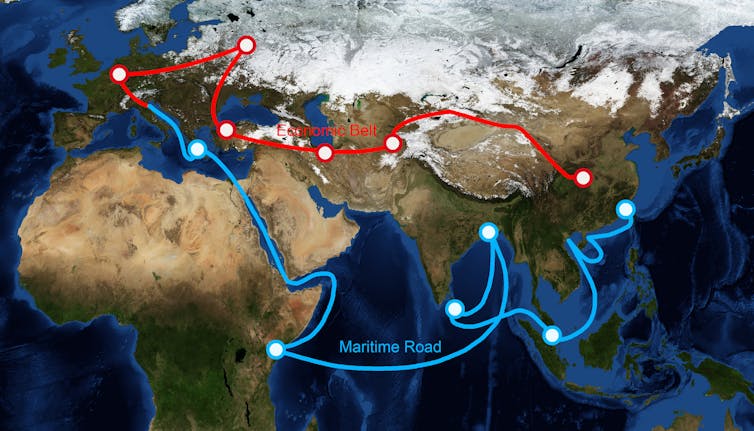
Controversial Deals
China’s President Xi Jinping announced the Belt and Road initiative in 2013. Since then, China has already helped build and operate at least 42 ports in 34 countries, including in Greece, Sri Lanka and Pakistan. As of October this year, 138 countries had signed onto the plan.
The Victorian government joined in 2018, in a move that stirred political controversy. Those tensions have heightened in recent weeks, as the federal government’s relationship with China deteriorates.
Read more: Why is there so much furore over China's Belt and Road Initiative?
Victorian Premier Daniel Andrews recently reiterated his commitment to the deal, saying: “I think a strong relationship and a strong partnership with China is very, very important.”
However, political leaders signing up to the Belt and Road plan must also consider the potential environmental consequences of the project.

Bigger Ports And More Ships
As well as ports, the Belt and Road plan involves roads, rail lines, dams, airfields, pipelines, cargo centres and telecommunications systems. Our research has focused specifically on the planned port development and expansion, and increased shipping traffic. We examined how it would affect coastal habitats (such as seagrass, mangroves, and saltmarsh), coral reefs and threatened marine species.
Port construction can impact species and habitats in several ways. For example, developing a site often requires clearing mangroves and other coastal habitats. This can harm animals and release carbon stored by these productive ecosystems, accelerating climate change. Clearing coastal vegetation can also increase run-off of pollution from land into coastal waters.
Ongoing dredging to maintain shipping channels stirs up sediment from the seafloor. This sediment smothers sensitive habitats such as seagrass and coral and damages wildlife, including fishery species on which many coastal communities depend.
A rise in shipping traffic associated with trade expansion increases the risk to animals being directly struck by vessels. More ships also means a greater risk of shipping accidents, such as the oil spill in Mauritius in July this year.

Ocean Habitat Destroyed
Our spatial analysis found construction of new ports, and expansion of existing ports, could lead to a loss of coastal marine habitat equivalent in size to 69,500 football fields.
These impacts were proportionally highest in small countries with relatively small coastal areas - places such as Singapore, Togo, Djibouti and Malta - where a considerable share of coastal marine habitat could be degraded or destroyed.
Habitat loss is particularly concerning for small nations where local livelihoods depend on coastal habitats. For example, mangroves, coral reefs, and seagrass protect coasts from storm surges and sea-level rise, and provide nursery habitat for fish and other marine species.
Our analysis also found more than 400 threatened species, including mammals, could be affected by port infrastructure. More than 200 of these are at risk from an increase in shipping traffic and noise pollution from ships. This sound can travel many kilometres and affect the mating, nursing and feeding of species such as dolphins, manatees and whales.

But There Are Opportunities, Too
Despite these environmental concerns, the Belt and Road initiative also offers an opportunity to improve biodiversity conservation, and progress towards environmental targets such as the United Nations’ Sustainable Development Goals.
For example, China could implement a broad, consistent environmental framework that ensures individual infrastructure projects are held to the same high standards.
In Australia, legislation helps prevent damage to wildlife from port activities. For example, go-slow zones minimise the likelihood of vessels striking iconic wildlife such as turtles and dugongs. Similarly, protocols for the transport, handling, and export of mineral concentrates and other potentially hazardous materials minimise the risk of pollutants entering waterways.
The Belt and Road initiative should require similar environmental protections across all its partner countries, and provide funding to ensure they are enacted.
China has recently sought to boost its environment credentials on the world stage – such as by adopting a target of net-zero carbon emissions by 2060. The global nature of the Belt and Road initiative means China is in a unique position: it can cause widespread damage, or become an international leader on environmental protection.![]()
Mischa Turschwell, Research Fellow, Griffith University; Christopher Brown, Senior Lecturer, School of Environment and Science, Griffith University, and Ryan M. Pearson, Research Fellow, Griffith University
This article is republished from The Conversation under a Creative Commons license. Read the original article.
Tick Population Booming In Our Area
Residents from Terrey Hills and Belrose to Narrabeen and Palm Beach report a high number of ticks are still present in the landscape. Local Veterinarians are stating there has not been the usual break from ticks so far and each day they’re still getting cases, especially in treating family dogs.
To help protect yourself and your family, you should:
- Use a chemical repellent with DEET, permethrin or picaridin.
- Wear light-colored protective clothing.
- Tuck pant legs into socks.
- Avoid tick-infested areas.
- Check yourself, your children, and your pets daily for ticks and carefully remove any ticks using a freezing agent.
- If you have a reaction, contact your GP for advice.
 Shorebird Identification Booklet
Shorebird Identification Booklet
The Migratory Shorebird Program has just released the third edition of its hugely popular Shorebird Identification Booklet. The team has thoroughly revised and updated this pocket-sized companion for all shorebird counters and interested birders, with lots of useful information on our most common shorebirds, key identification features, sighting distribution maps and short articles on some of BirdLife’s shorebird activities.
The booklet can be downloaded here in PDF file format: http://www.birdlife.org.au/documents/Shorebird_ID_Booklet_V3.pdf
Paper copies can be ordered as well, see http://www.birdlife.org.au/projects/shorebirds-2020/counter-resources for details.
Download BirdLife Australia's children’s education kit to help them learn more about our wading birdlife
Shorebirds are a group of wading birds that can be found feeding on swamps, tidal mudflats, estuaries, beaches and open country. For many people, shorebirds are just those brown birds feeding a long way out on the mud but they are actually a remarkably diverse collection of birds including stilts, sandpipers, snipe, curlews, godwits, plovers and oystercatchers. Each species is superbly adapted to suit its preferred habitat. The Red-necked Stint is as small as a sparrow, with relatively short legs and bill that it pecks food from the surface of the mud with, whereas the Eastern Curlew is over two feet long with a exceptionally long legs and a massively curved beak that it thrusts deep down into the mud to pull out crabs, worms and other creatures hidden below the surface.
Some shorebirds are fairly drab in plumage, especially when they are visiting Australia in their non-breeding season, but when they migrate to their Arctic nesting grounds, they develop a vibrant flush of bright colours to attract a mate. We have 37 types of shorebirds that annually migrate to Australia on some of the most lengthy and arduous journeys in the animal kingdom, but there are also 18 shorebirds that call Australia home all year round.
What all our shorebirds have in common—be they large or small, seasoned traveller or homebody, brightly coloured or in muted tones—is that each species needs adequate safe areas where they can successfully feed and breed.
The National Shorebird Monitoring Program is managed and supported by BirdLife Australia.
This project is supported by Glenelg Hopkins Catchment Management Authority and Hunter Local Land Services through funding from the Australian Government’s National Landcare Program. Funding from Helen Macpherson Smith Trust and Port Phillip Bay Fund is acknowledged.
The National Shorebird Monitoring Program is made possible with the help of over 1,600 volunteers working in coastal and inland habitats all over Australia.
The National Shorebird Monitoring program (started as the Shorebirds 2020 project initiated to re-invigorate monitoring around Australia) is raising awareness of how incredible shorebirds are, and actively engaging the community to participate in gathering information needed to conserve shorebirds.
In the short term, the destruction of tidal ecosystems will need to be stopped, and our program is designed to strengthen the case for protecting these important habitats.
In the long term, there will be a need to mitigate against the likely effects of climate change on a species that travels across the entire range of latitudes where impacts are likely.
The identification and protection of critical areas for shorebirds will need to continue in order to guard against the potential threats associated with habitats in close proximity to nearly half the human population.
Here in Australia, the place where these birds grow up and spend most of their lives, continued monitoring is necessary to inform the best management practice to maintain shorebird populations.
BirdLife Australia believe that we can help secure a brighter future for these remarkable birds by educating stakeholders, gathering information on how and why shorebird populations are changing, and working to grow the community of people who care about shorebirds.
To find out more visit: http://www.birdlife.org.au/projects/shorebirds-2020/shorebirds-2020-program
Pittwater Reserves
Aussie Bread Tags Collection Points

Christmas Stamps 2020 Feature Australian Flora And Fauna
In the lead-up to Christmas, Australia Post has released some beautiful stamps to provide a festive touch your Christmas greetings.
While the full Christmas stamp issues were released on 30 October 2020, the international-rate Christmas stamps were made available from 1 October 2020, to help ensure that our customers’ international Christmas mail reaches its intended destination on time, in light of the impacts of COVID-19 on worldwide mail delivery.
Christmas-themed stamps
This year’s traditional Christmas stamps (65c, the domestic Christmas-card rate and $2.20, the international Christmas-card rate), feature artwork by sculptor and artist Leopoldine Mimovich OAM (1920–2019). The Christmas scenes, beautifully rendered in oil paint and gold foil, feature Mary, Joseph and the baby Jesus amidst native flora and fauna.
The secular Christmas stamps feature illustrations by Sarah Allen, which have a folksy, vintage feel. The Christmas pudding, stocking and wreath are adorned with native Australian flora and fauna, including kangaroo paw, waratah and a Flame Robin.
The Christmas 2020 product range includes booklets of 20 of each of the 65c self-adhesive stamp designs, complete with convenient “card only” stickers.
Christmas Island Christmas stamp issue
This year’s joyful, colourful illustrations for the Christmas Island Christmas stamp issue are by Sonia Kretschmar. The two stamps (domestic Christmas-card rate and international Christmas-card rate) feature an enthusiastic musical troupe of carol singers and instrumentalists, led by Santa and Rudolph.
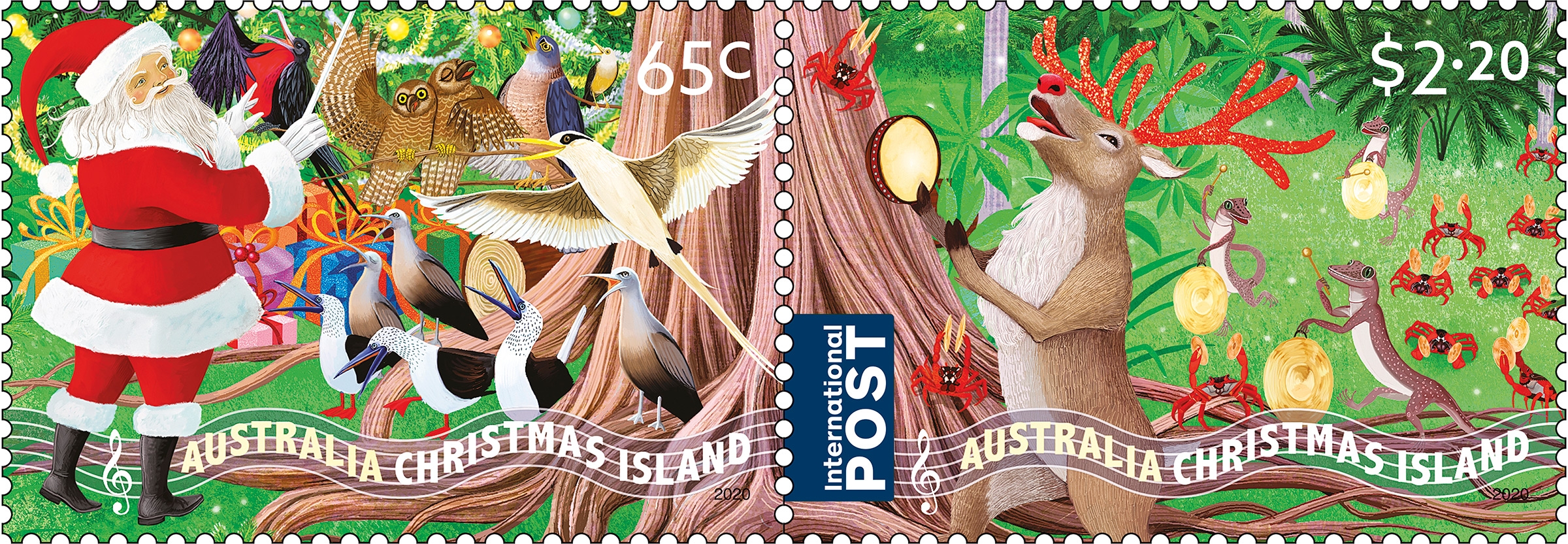
65c - Mother Mary and the infant Jesus
This stamp shows a stately Madonna and Child amid the colourful Australian bush, surrounded by an array of native flora, including banksia, wattle, eucalyptus and waratah. Various animals, such as a magpie, kookaburra, owl, Koala, possum, wallaby, cockatoo and parrot, are perched in the foliage, as if paying homage to the Christ Child. The work was painted in oil on canvas board in 1980 and is in the Australian Catholic University Art Collection.
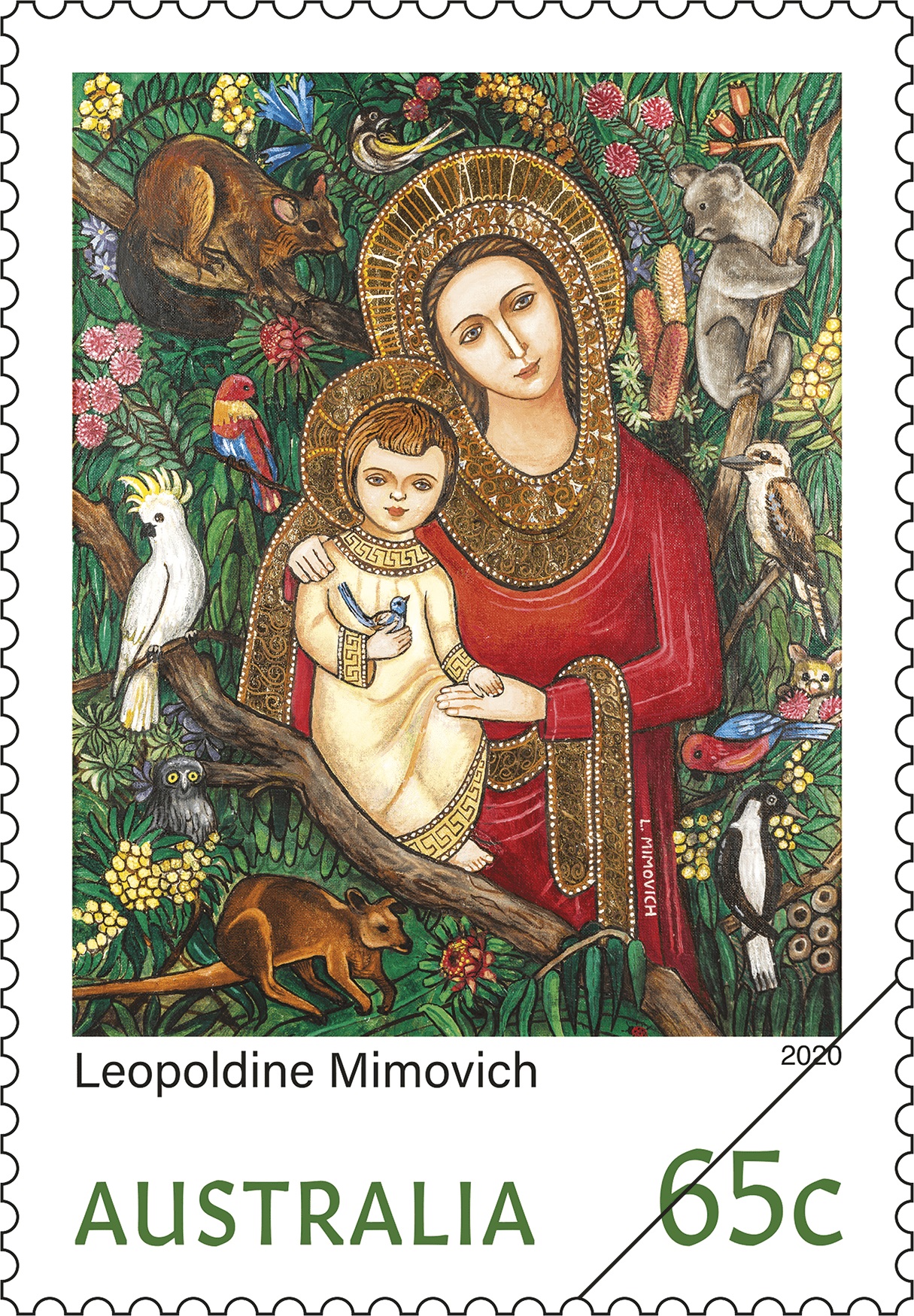
65c - Christmas wreath
The wreath has a very long history, first being used in ancient times as a head adornment. Made of laurel, olive or oak leaves, wreaths symbolised a person’s status or particular achievements. Christmas wreaths are made of evergreen branches to symbolise everlasting life. Today, Christmas wreaths are customarily placed on the front door, and while they can be made of almost anything, most are predominantly evergreen with red decorations such a bows, baubles and berries. The wreath featured on the stamp comprises native Australia flora, with a delightful Flame Robin perched at the base.
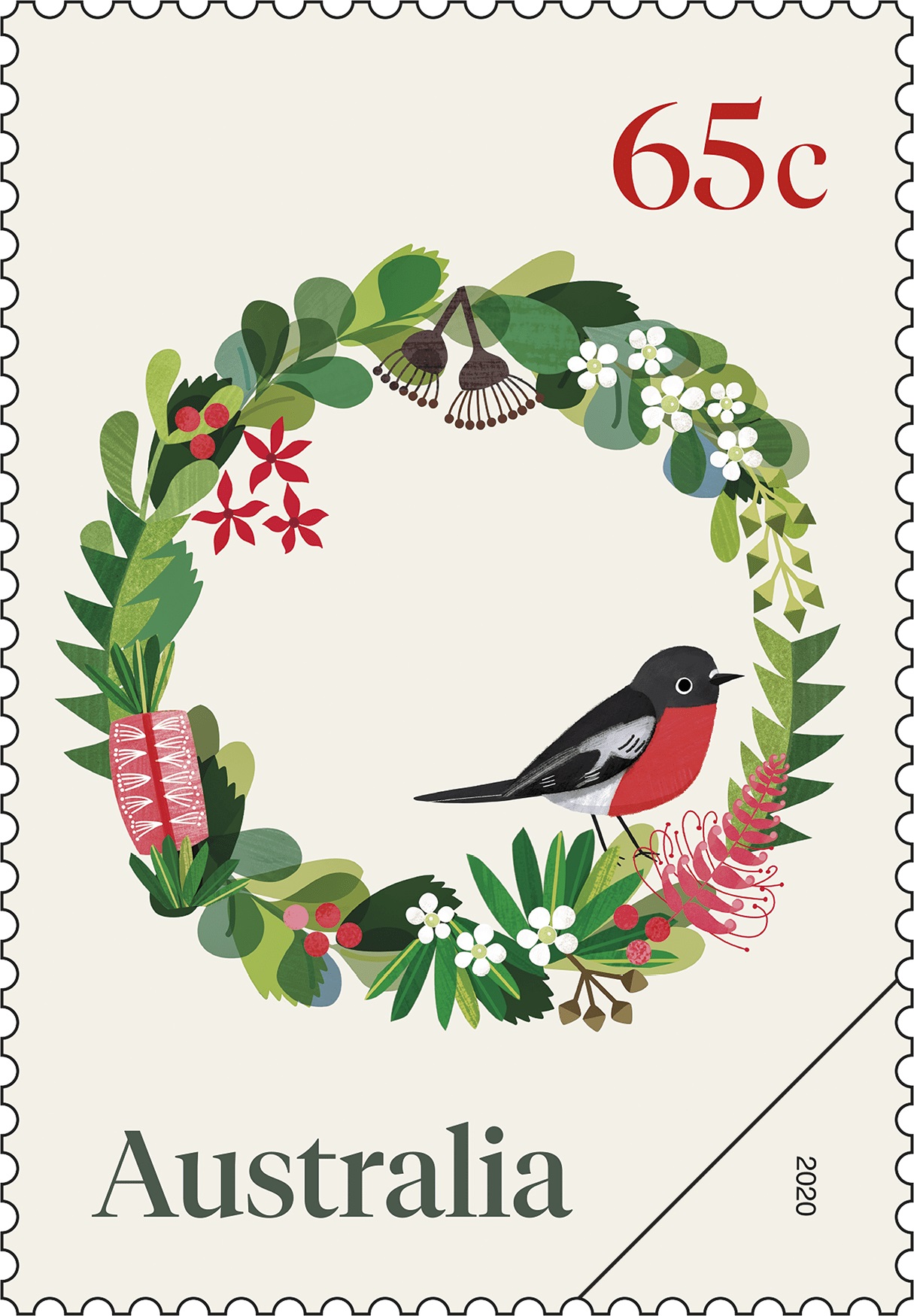
65c - Christmas stocking
The origin of the Christmas stocking is somewhat obscure, but it seems that for hundreds of years children have left shoes and stockings by the fireplace on Christmas Eve to be filled with gifts by Father Christmas. For naughty children, the threat is that they will receive coals instead of treats. The stocking featured on the stamp is overflowing with Australian native plants and flowers, including kangaroo paw and waratah.
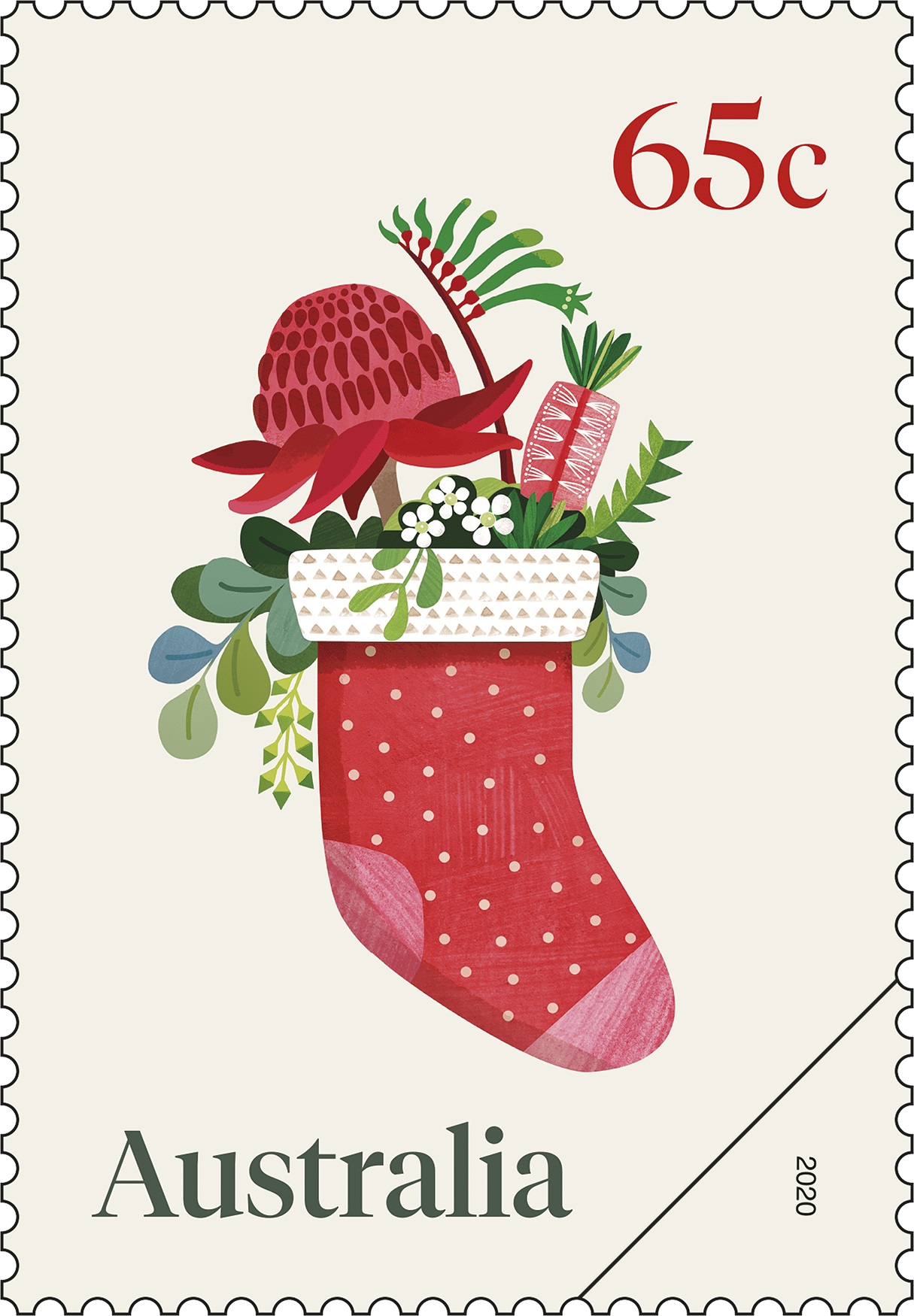
$2.20 - Christmas pudding
Christmas pudding, or plum pudding, is a British and Irish tradition, thought to have originated in the Middle Ages. The pudding is composed of dried fruits, held together by egg or suet, and flavoured with spices and brandy. It is made and steamed a month or more before Christmas and hung up in a bag to mature, preserved by the high alcohol content. The reheated pudding is served on Christmas Day, after being doused in brandy, ignited and brought to the table all aflame. Like the turkey, the Christmas pudding is usually served hot, even in the sweltering heat of the Australian summer.
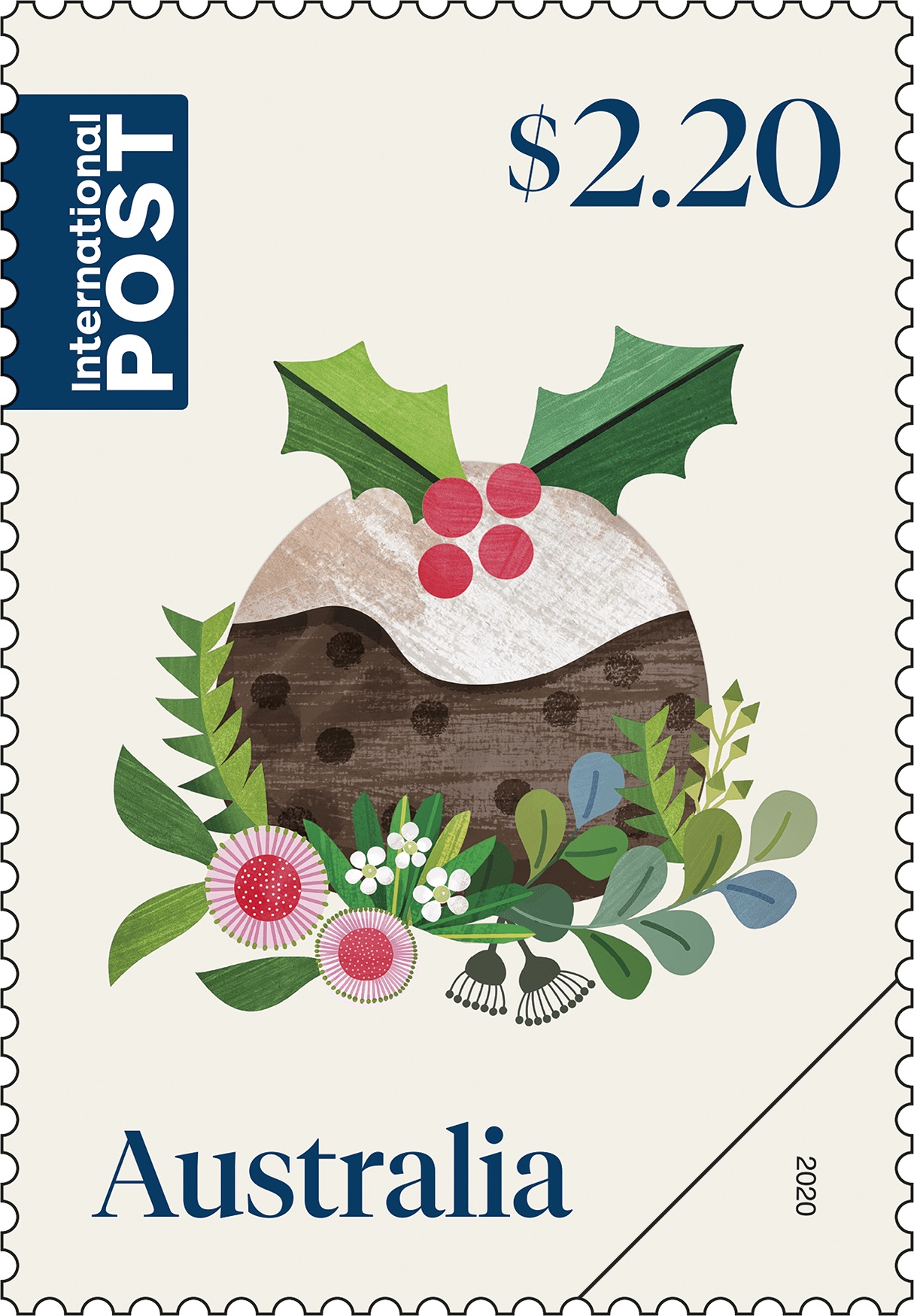
$2.20 - Holy Family
This stamp shows a domestic scene of Joseph, Mary and baby Jesus. Their setting suggests the manger but, instead of the traditional cattle and sheep, they are attended by native Australian animals and their young in the bush. This work was painted in oil and gold foil on board and is held in the Australian Catholic University Art Collection.
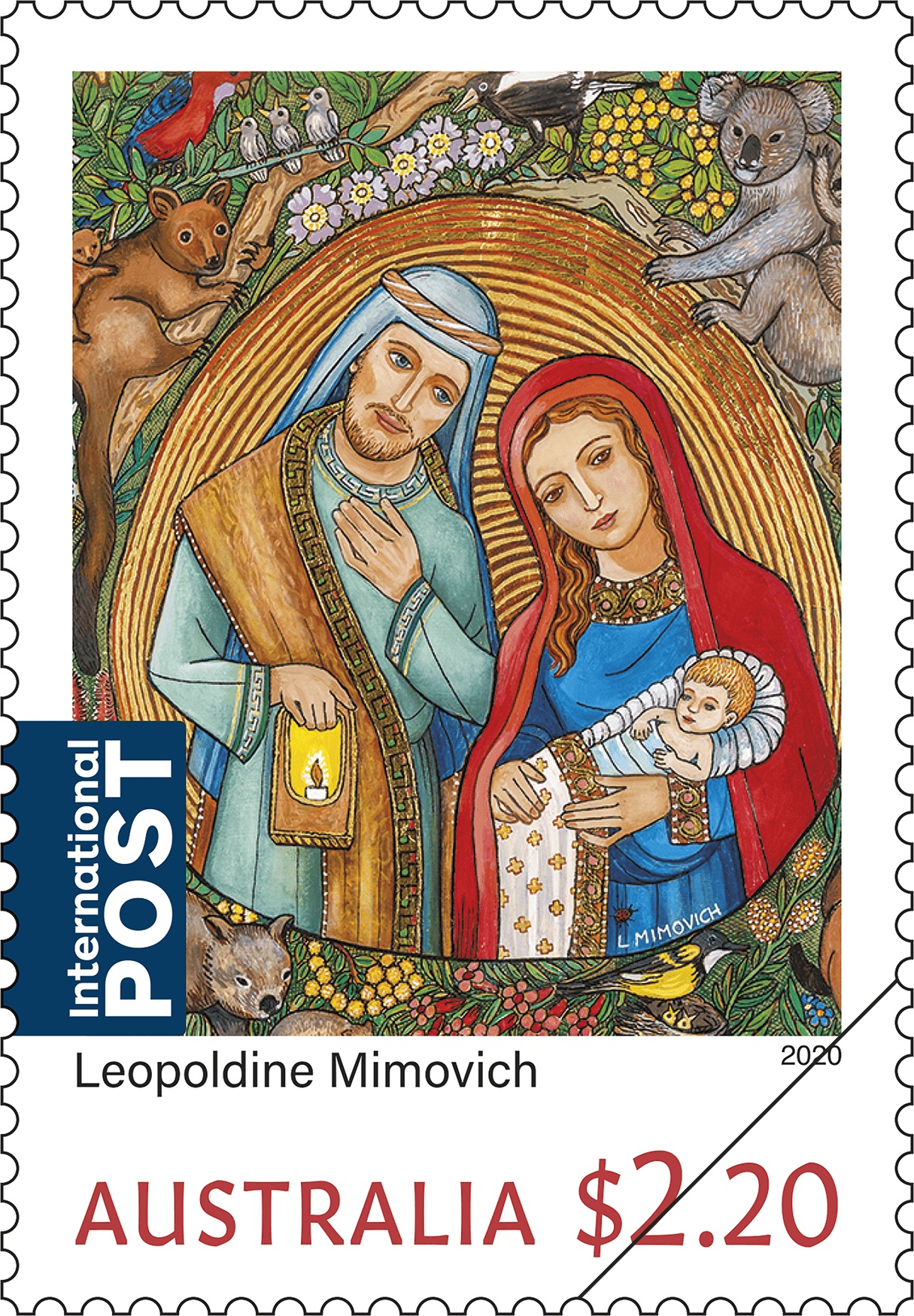
'Schoolies 2020 - But We Must Be COVID-Safe': Police Warn School Leavers Ahead Of End Of School Celebrations
Friday, 20 November 2020
‘This year is different, this is not schoolies as you know it’ – that’s the message from senior officers at Tweed/Byron Police District ahead of 2020 end of school celebrations.
School leavers from across NSW and interstate are due to arrive in Byron Bay and other parts of Northern NSW from today (Friday 20 November 2020), and are expected to stay into December.
While there are no formal events associated with ‘Schoolies 2020’ occurring in the Byron Bay area, police are expecting thousands of school leavers to descend on the coastal town to mark the end of their 13 years of schooling.
In anticipation for the large crowds, Tweed/Byron Police District will conduct an extensive and high-visibility operation for the duration of the ‘schoolies’ period, assisted by the Richmond Police District and other Northern Region commands, the Public Order and Riot Squad, Northern Operational Support Group officers, the Mounted Unit, the Police Dog Unit, Traffic and Highway Patrol, and the Youth Command and PCYC.
Tweed/Byron Police District Commander, Superintendent Dave Roptell, said this year’s celebrations must be conducted in a COVID-safe environment, with officers to enforce all current Public Health Orders and conduct regular business compliance checks.
“We know this has been an extremely tough year for HSC students, and we appreciate that school leavers want to have a memorable time. However, these are not normal times, so we ask anyone coming to the far North Coast to be respectful – we have come this far in managing COVID-19 in our regional communities, let’s not undo all our hard work now,” Supt. Roptell said.
“With the NSW and Queensland border now re-open to regional NSW, Byron Bay is included in that zone. And with the border between NSW and Victoria to re-open early next week, we are expecting thousands of school leavers to come to our area.
“The NSW Police Force continues to work closely with health officials and other government agencies, businesses and the community to manage the COVID-19 crisis and minimise the spread of the virus.
“In saying that, we have a very clear message to those choosing to come to Byron in 2020 – this year is very different, there will be no large gatherings, no dance parties in the park. Social distancing is the new normal, and we all have to do our bit to stop the spread.
“The risk of community transmission is still present here in Australia, and with people from interstate expected to come to Byron, school leavers need to be extremely aware of the dangers of COVID-19.
“Public Health Orders currently state that no more than 20 persons can be inside a home at any one time – this includes short-stay accommodation. The orders also state that up to 30 people can be gathered in a public space at any one time, this includes places such as parks, beaches, etc.
“While we will be enforcing the Public Health Orders, police want to remind school leavers that we aren’t here to ruin the fun – our officers are here to protect you and keep you safe; approach police or authorities if you are in danger, if you feel threatened or you are a victim of any type of crime.
“Not only will police be ensuring Public Health Orders are being followed, but officers will be targeting drug and alcohol-related crime, as well as anti-social behaviour.
“Drugs and alcohol impairs your judgement and can lead to risky behaviours or choices which can impact the rest of your life. Know your limits and look out for your mates.
“With the increase in activity in the Byron town centre, we are urging all visitors and locals alike to plan ahead; those not joining in the celebrations are asked to watch out for increased pedestrian activity and keep an eye out on the roads.
“As always, if you’re planning on drinking – you need a Plan B to get yourself home,” Supt. Roptell said.
The NSW Police Force continues to work closely with the Schoolies Safety Response agencies, which include Byron Youth Service and Red Frog volunteers, alongside all health officials and other government agencies, businesses and the community to minimise disruption and maintain a COVID-Safe environment.
For all information related to schoolies during COVID-19, visit the website: https://www.schoolies.com/covid-19-faq
Anyone who has information regarding individuals or businesses in contravention of a COVID-19-related ministerial direction is urged to contact Crime Stoppers: https://nsw.crimestoppers.com.au. Information is treated in strict confidence. The public is reminded not to report crime via NSW Police social media pages.
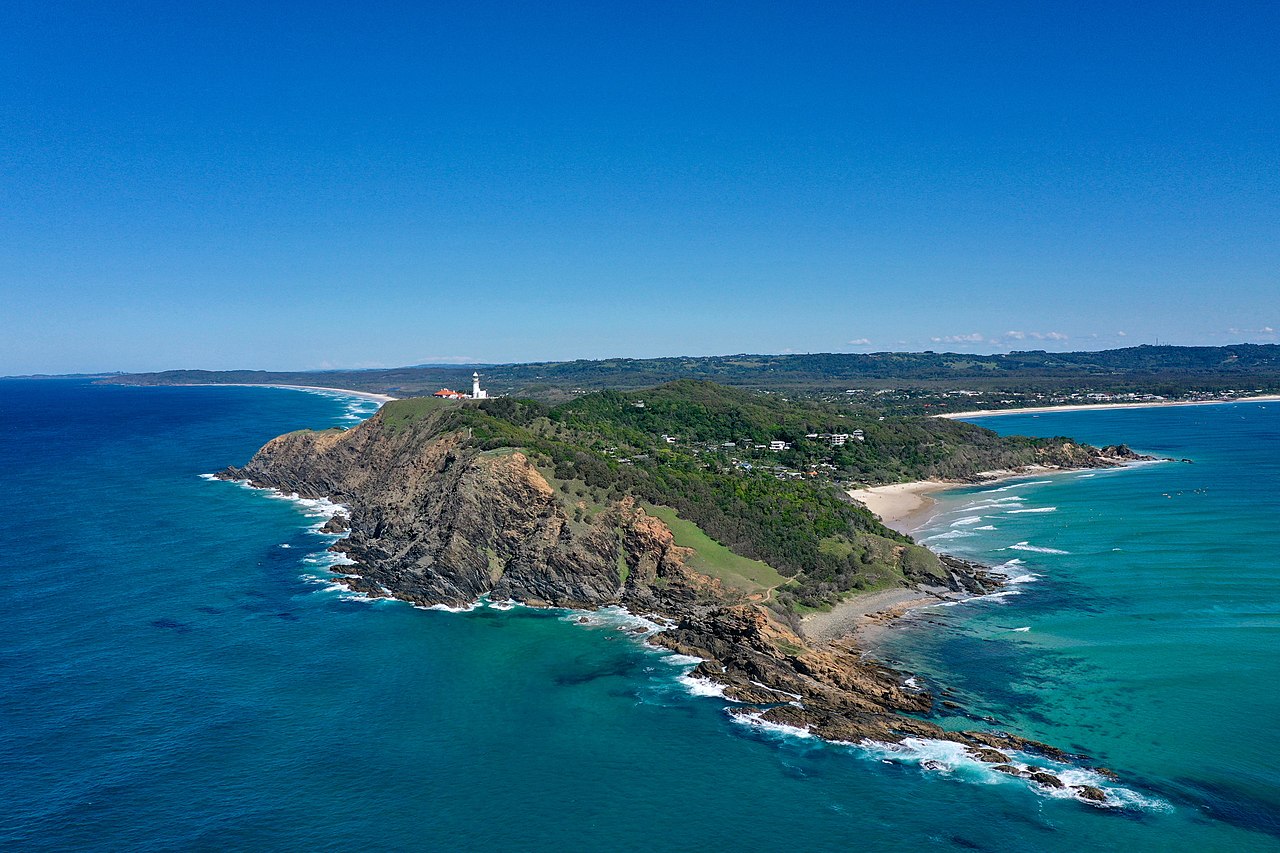
Byron Bay Lighthouse, Beach and Hinterland Aerial Shot by K Pravin
Program Helps Skill Up School Leavers Over Summer
The NSW Government's Skilling for Recovery program offers fee-free training places for school leavers, young people and job seekers.
Hundreds of fee-free training courses are now available for school leavers, young people and job seekers, as part of the NSW Government’s Skilling for Recovery initiative.
Premier Gladys Berejiklian said the courses came from the $320 million committed to delivering 100,000 fee-free training places across the state.
“There are more than 100,000 fee-free training places available for people in NSW as the workforce looks to reskill, retrain and redeploy in a post-COVID-19 economy,” Ms Berejiklian said.
“It doesn’t matter if you are a school leaver or looking for a new career path, I encourage everyone impacted by the pandemic to see what training options are available to them.”
Minister for Skills and Tertiary Education Geoff Lee said enrolments were now open for in-demand skills leading to career pathways in areas such as aged care, nursing, trades, IT, community services, logistics and accounting.
“We are not training for the sake of training, we are training for real jobs with real futures and equipping the people of NSW with the skills they need to thrive in a post-pandemic economy,” Mr Lee said.
“There are hundreds of providers right around NSW who are ready to deliver this important training.”
As part of this Skilling for Recovery initiative, school leavers have the unique opportunity to experience a range of skills to find out what suits their passions using the Summer Skills program.
Minister for Education Sarah Mitchell said some Year 12 school leavers were still deciding what they wanted to do next.
“In designing the Summer Skills program, the NSW Government has ensured the training on offer is aligned to local industry needs,” Ms Mitchell said.
“We need to provide opportunities that help the 2020 Year 12 school leaver cohort to find their feet during these uncertain times. That’s why we’re delivering practical, bite-sized and fee-free training opportunities this summer.”
The Summer Skills offered will cover a range of industries including agriculture, construction, conservation, fitness, engineering, coding, communication and digital literacy.
You can find further details of the courses on offer as part of Skilling for Recovery and the Department of Education Summer Skills program on the respective websites.
Great Ideas - Sustainable Fashion: Curtin Grads Team Up For ‘Fibre Economy’ Workwear
In Perth, three young women have established a non-profit enterprise to help promote the role of clothing in the ‘the circular economy’.
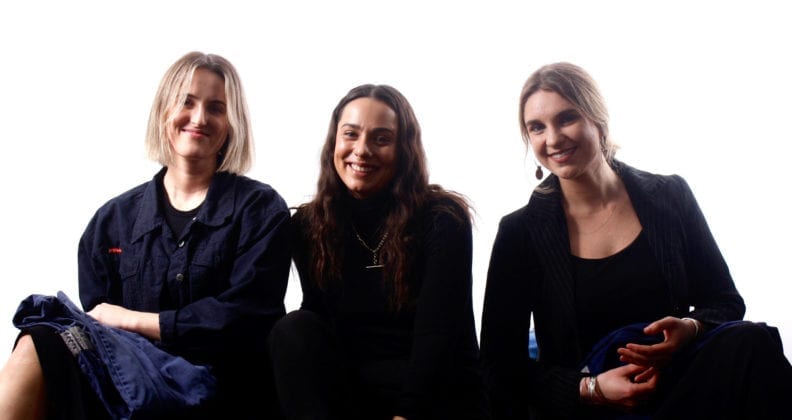
The Fibre Economy team: Shannon Itzstein, Claudi Janse Van Rensburg, Molly Ryan.
As more and more consumers recognise the environmental impact of fast fashion, word is spreading – from the houses of haute couture to outback industry – about the need for sustainable fashion design.
Friends and former housemates Molly Ryan and Claudi Janse Van Rensburg became sustainable fashion enthusiasts while studying fashion design at Curtin.
With the support of Curtin, both Molly and Claudi completed internships at the Hong-Kong based organisation Redress, although at different times during their course. Redress is the world’s largest and most pro-active organisation in sustainable fashion design, and it provided the two Curtin students with an aspirational experience.
Together with friend Shannon Itzstein, Molly and Claudi went on to establish a recycling enterprise called Fibre Economy, which redistributes second-hand workwear from mine sites to those who need them.
“Shannon works in WA’s northwest, where she saw a lot of workwear being discarded in good condition, or even brand new,” Molly explains. “Mine site workers receive several uniforms each year – they’re good quality cargo jeans and cotton shirts, but not everyone needs to replace their workwear that often.
“So we’ve arranged for the unwanted clothing to be sent to us. We sort the clothes and send the new and worn jeans to employment charities that help people transition into the workforce.”
Even the ‘unwearable’ items aren’t wasted – they’re given to Curtin fashion design students for projects in upcycling.
Almost a year later and Fibre Economy is more popular than they’d imagined, with charities across Western Australia and the Northern Territory supporting their initiative.
No time for fast fashion
The rampant consumption of cheap apparel, often called ‘fast fashion’, is a major contributor to the fashion industry’s shameful environmental impacts. While textile and clothing factories in some countries are known to have caused smog and polluted waterways, less attention has been given to the impact of mass-produced clothing at the other end of its short lifespan.
Fast fashion has caused us to lose our connection with our clothes, Molly believes, with most opting to discard and replace, rather than treat clothes as an investment and make time to mend them.
“I come from a long line of seamstresses, and from a young age my mother instilled in me an appreciation for well-made clothes.”
She adds that although growing up in Margaret River gave her an innate respect for the natural environment and hand-crafted textiles, her passion for sustainable design methods was inspired by Curtin lecturers, Dr Anne Farren, Dr Kelsey Ashe Giambazi and Jill Morrall.
“Anne is a true a pioneer in sustainable fashion education in Western Australia,” she says, appreciatively.
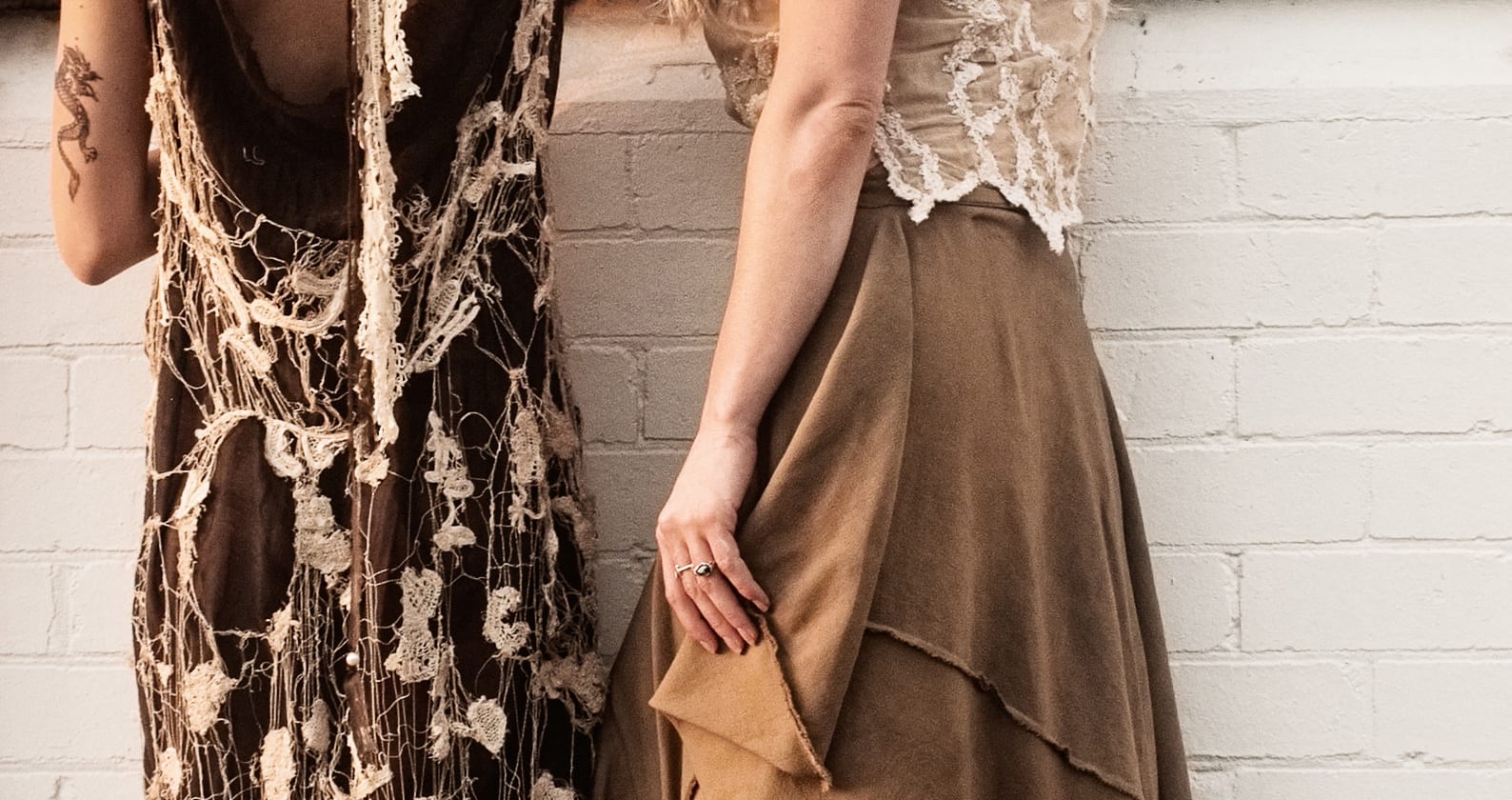
‘Sustainable fashion’ designs from Molly’s graduate collection, Anecdotes le Femme.
“We learned how to upcycle garments and textiles for new designs. Dyeing, rearranging, manipulating. Reworking them on the body – it’s very creative.
It was also at Curtin that Molly learned “the ugly truth about the fashion industry”.
“People used to make do with only four sets of clothes. Now, most fashion consumers wear only a small portion of what they own,” she adds.
But the problem of excess isn’t originating in the high-fashion houses of Milan, London, New York and Hong Kong.
While haute couture might be impractical, fanciful and ephemeral, it rarely becomes landfill. And if it does, the textiles that luxury fashion prefers – silk, wool, cashmere and linen – are all biodegradable.
“The value placed on haute couture, and its tendency to be kept in rotation and admired years after it hits the shelves, is positive,” Molly explains.“Much of the polyester produced by fast fashion still exists … but mostly in landfill.”
The environmental impacts of non-biodegradable textiles are piling up. Of the 100 billion fashion items produced globally every year, more than 70 per cent will end up in landfill. In Australia alone, the ABC’s War on Waste program has revealed, we discard 6,000 kilograms of clothes every 10 minutes.
Most of that is synthetics like polyester, spandex and nylon – which may take hundreds of years to break down. And being plastic, polyester will release microplastic pollutants into your washing water and out into the environment, Molly points out.
She’s about to graduate with a degree in fashion design, and has plans to further promote sustainable fashion through creative upcycling workshops and education.
“Reducing the environmental impact of the fashion industry has to be consumer-driven. Circular fashion – where we intercept the clothing at post-consumer stage – helps to keep the resources in a closed-loop system.
“Fibre Economy is a work in progress, but it’s making a difference.”
The war between Xbox and Playstation is no longer about consoles. It's about winning your loyalty

In the latest salvo of an almost two-decade console war between Microsoft and Sony, both Sony’s Playstation 5 and Microsoft’s Xbox Series S/X were launched last week.
With increased spending on videogames due to ongoing quarantine and travel restrictions, the launches have been described as historically significant. Head of Xbox Phil Spencer tweeted:
As is typical for a “next-generation” launch, both consoles sport significant boosts to computing power, support 4K graphics and offer faster performance and loading times. But unlike previous launches, they present starkly different visions for the future of video gaming.
Sony continues to focus on providing exclusive content. Meanwhile, Microsoft yesterday launched its Project xCloud game streaming service in Australia — the most recent step in a wider trend towards embracing a subscription-based business model.
Sony’s Focus On Exclusivity
For a long time, new consoles had been primarily marketed around “platform exclusive” titles available only for that console.
Sony and Microsoft have in the past paid millions to developers for exclusivity deals. In 2010, Microsoft paid Rockstar Games US$75,000,000 to stop Grand Theft Auto IV from becoming a Playstation 3 exclusive.
Sony’s recent PS5 launch carries on this tradition. The console is marketed in terms of first-party exclusives, such as those developed by Naughty Dog (Uncharted, The Last of Us) and Sony Computer Entertainment’s Santa Monica Studio (God of War).
Sony has also had great success selling hardware peripherals that make its consoles more attractive, evident in recent quarterly revenues. The PlayStation virtual reality headset sold more than five million units worldwide during the last generation.
In contrast, Microsoft quickly abandoned the Kinect. This motion-sensing device bundled with the Xbox One never won over its audience.
The Rise Of Subscription Gaming
That said, although Sony vastly outsold Microsoft with the PS4 last generation, it seems in 2020 Microsoft has shifted the goalposts of success.
As Phil Spencer notes, Microsoft’s aim is no longer to sell the most consoles, but to accumulate the most players, irrespective of where they’re playing. The console itself is now almost secondary.
For instance, Microsoft’s Game Pass subscription service, launched in 2017, provides access to Xbox titles across both Xbox consoles and PC. Game Pass follows a similar model to Netflix, wherein users pay a monthly fee to access a library of content.
And although having a Game Pass membership isn’t mandatory, Microsoft reports 70% of X/S console users do.

On the surface, subscription gaming seems to offer better value for money in terms of access to content, as gamers don’t have to buy the games outright.
But as has been the case with competing television and film streaming services, should subscription gaming become more common, paying for a range of subscriptions may become costly — especially if certain games are exclusive to certain services.
Read more: Apple, Google and Fortnite's stoush is a classic case of how far big tech will go to retain power
Gaming On The Cloud, Everywhere
The Game Pass service uses “cloud gaming” technology. Whereas consoles provide the local computing hardware needed to play games, cloud gaming involves streaming games over the internet, from a host’s remote servers to the user’s device.

In the past, this hasn’t worked well due to “high latency”. This refers to the delay between making an input (such as shooting a character) and seeing the result (the character being shot).
However, with improved computing power, internet speeds and clever design tricks, cloud gaming is becoming a crowded market, with big tech companies including Google and Amazon joining in, too.
Sony began experimenting with cloud gaming in 2014 with PS Now. This service allows the streaming of older titles, such as PS3 games. And while Sony continues to offer PS Now for the PS5, and at a cheaper price point than Microsoft’s Game Pass, the PS Now is still focused on old games.
On the other hand, Microsoft is aggressively pushing its new Project xCloud. This service, which comes bundled with the GamePass, allows users to stream certain newer Xbox games directly to their smartphone or tablet, without even needing to own an Xbox console.
Clearly, Micosoft’s focus is on players, not consoles. Considering the massive impact smartphones are having on who plays games (and how often), Microsoft may be setting itself up to engage a much larger audience than ever before.
An Evolving Market
The 2020 console war looks quite different to those of the past, when a single winner often took it all (or at least the majority of it). Think Nintendo in 1990s North America, or Sony’s domination last generation with the PS4.
In light of Microsoft’s shifting approach, we’re now in a situation where two winners will likely take large chunks of different markets, by doing different things.
On one hand, this might help diversify the market and provide greater variety for consumers. On the other, Sony and Microsoft’s divergence might have gamers spending more than ever.
Read more: No, you're probably not 'addicted' to your smartphone – but you might use it too much ![]()
Ben Egliston, Postdoctoral research fellow, Digital Media Research Centre, Queensland University of Technology and Marcus Carter, Senior Lecturer in Digital Cultures, SOAR Fellow., University of Sydney
This article is republished from The Conversation under a Creative Commons license. Read the original article.
Let it happen or make it happen? There's more than one way to get in the zone

We often hear about people being “in the zone” when they have excelled, be it at sport, playing music, video gaming, or going for a run.
For decades, researchers have tried to find out what the zone is and how to enter it. And the assumption has been that there is one zone that we can experience.
Our research with athletes, however, suggests there may be two types of zone.
One is a “flow state”, where athletes describe effortlessly “letting it happen”. The other is a “clutch state”, where athletes report “making it happen” by purposefully and powerfully stepping up in a key moment.
Here’s how to decide which zone you need to be in — and how to get there.

Flow Vs Clutch States
Much research or media reporting about the zone is often based on interviews with athletes which take place some months or years after their performances have happened.
This means our understanding has been based on old, and likely faded, memories. As a result, people remember their experiences as one zone.
For our research, we interviewed athletes within days or hours of exceptional performances, allowing them to describe their experiences in much more detail.
We heard frequently of different ways of being “in the zone”, sometimes employed during different parts of a challenge. As a polar explorer told us, “They’re definitely two different states.”
A marathon runner told us:
It was like two different races.
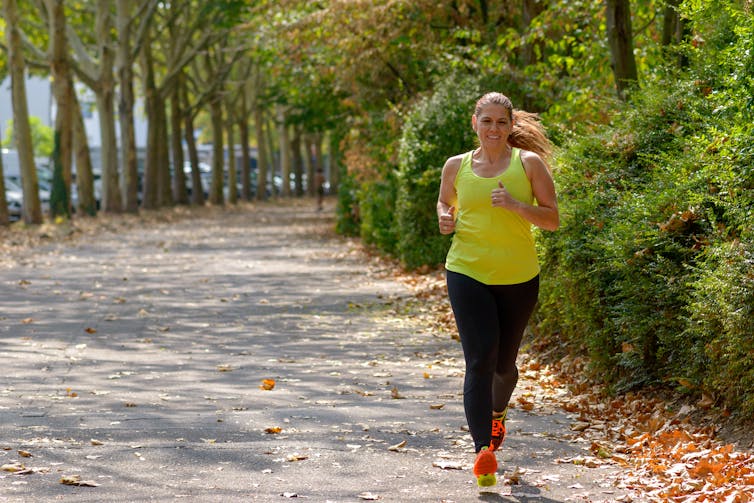
The flow state is where you become completely absorbed in what you are doing, you perform the task effortlessly — as if you are on autopilot — and it feels like everything harmoniously clicks into place.
The clutch state was described as “making it happen”, where athletes purposefully step up their effort and concentration during important moments in a performance.
This state describes clutch performance — a common term among fans and media in sport — such as Michael Jordan’s famous buzzer-beater in the 1989 playoffs (from from about the 2:00 mark in the video below).
Read more: The psychology of the clutch athlete
Which Zone Should You Aim For?
We would all love to be in the zone more often. Now that the research is telling us there are actually two types of zone, a first step is to recognise which zone you’re aiming for.
Clutch performances occur in certain situations under pressure, when there is an important outcome on the line. Think meeting deadlines, running to catch the last bus home, or being at the end of a race with a personal best on the line.
Flow occurs in situations where there’s novelty, exploration, and experimentation. This might be playing a golf course for the first time, running a new route, or sitting down with a blank page and brainstorming ideas. There’s no pressure or expectation — you’re free to explore.
Both zones can happen in the same event too. For example, runners can be in flow during the start or middle of a race, and then realise they have a chance of breaking their personal best or a chance to win, and flip into a clutch performance at the end — like when Shura Kitata won in a sprint finish in the men’s 2020 London Marathon (from about the 2:05 timestamp in the video below).
How Can You Get In Each Zone?
Research suggests the type of goals we set plays an important role in getting into each zone.
Clutch performances occur when we realise there is an important outcome at stake, we understand what is required, and we step up our effort. You’ve probably done this before — like pulling an all-nighter to get your assignment finished, staying late at work to meet an important deadline, or pushing hard to record a personal best.
The key to these clutch performances is having a specific goal in mind, and understanding clearly what you need to do to meet the challenge (for example, “if I can run this last kilometre in under five minutes I can break my personal best”).
Once this challenge is set, it’s quite natural for us to increase our effort and intensity in order to achieve the goal.

To get into flow, however, we need to think a bit differently. We need to create situations where we can explore — where we’re free from expectation and pressure.
An important part of this is setting open goals such as to “see how well I can do,” “see how many under par I can get”, or “see how fast I can run the next five kilometres”.
These open-ended, non-specific goals help avoid pressure and expectation, letting you gradually build your confidence, and increasing your chances of getting into flow.![]()
Christian Swann, Associate Professor in Psychology, Southern Cross University and Scott Goddard, PhD candidate, Southern Cross University
This article is republished from The Conversation under a Creative Commons license. Read the original article.
Why can't some people admit defeat when they lose?
Evita March, Federation University AustraliaWhen US President-Elect Joe Biden and Deputy Vice President-Elect Kamala Harris gave their victory speeches on Saturday evening, local time, the tally of Electoral College votes showed they had decisively passed the crucial 270-vote threshold, delivering them to the White House this January.
Tradition dictates the losing candidate also gives their own speech to concede defeat. But their vanquished opponent, Donald Trump, hasn’t done that.
We cannot psychoanalyse Trump from a distance, though I am sure many of us have tried. We can, however, apply psychological theories and models to understand the denial of defeat. My area of research — personality psychology — may prove particularly useful here.
Reluctance to admit defeat, even when the battle is hopelessly lost, is a surprisingly understudied phenomenon. But there is some research that can help give an insight into why some people, particularly those who display a trait called “grandiose narcissism”, might struggle to accept losing. Put simply, these people may be unable to accept, or even comprehend, that they have not won.
Other psychological theories, such as cognitive dissonance (resulting from the discrepancy between what we believe and what happens) can also help explain why we double down on our beliefs in the face of overwhelming contrasting evidence.
If You Think You’re Better Than Everyone, What Would Losing Mean?
Personality traits may provide insight as to why someone could be unwilling to accept defeat.
Narcissism is one such trait. There is evidence to suggest there are two main forms of narcissism: grandiose narcissism and vulnerable narcissism.
In this article, we’ll focus on grandiose narcissism, as characteristics of this trait seem most relevant to subsequent denial of defeat. People who show hallmarks of grandiose narcissism are likely to exhibit grandiosity, aggression, and dominance over others. According to researchers from Pennsylvania State University, publishing in the Journal of Personality Disorders, this type of narcissism is associated with:
…overt self-enhancement, denial of weaknesses, intimidating demands of entitlement … and devaluation of people that threaten self-esteem.
The grandiose narcissist is competitive, dominant, and has an inflated positive self-image regarding their own skills, abilities, and attributes. What’s more, grandiose narcissists tend to have higher self-esteem and inflated self-worth.
For the grandiose narcissist, defeat may compromise this inflated self-worth. According to researchers from Israel, these people find setbacks in achievement particularly threatening, as these setbacks could indicate a “failure to keep up with the competition”.
Instead of accepting personal responsibility for failure and defeat, these individuals externalise blame, attributing personal setbacks and failures to the shortcomings of others. They do not, or even cannot, recognise and acknowledge the failure could be their own.
Based on the profile of the grandiose narcissist, the inability to accept defeat may best be characterised by an attempt to protect the grandiose positive self-image. Their dominance, denial of weaknesses, and tendency to devalue others results in a lack of comprehension it’s even possible for them to lose.
Why Do Some People Double Down Despite Evidence To The Contrary?
In the 1950s, renowned psychologist Leon Festinger published When Prophecy Fails, documenting the actions of a cult called The Seekers who believed in an imminent apocalypse on a set date.
Following the date when the apocalypse did not occur, The Seekers did not question their beliefs. Rather, they provided alternative explanations — doubling down on their ideas. To explain this strengthened denial in the face of evidence, Festinger proposed cognitive dissonance.
Cognitive dissonance occurs when we encounter events that are inconsistent with our attitudes, beliefs, and behaviour. This dissonance is uncomfortable as it challenges what we believe to be true. To reduce this discomfort, we engage in strategies such as ignoring new evidence and justifying our behaviour.
Here’s an example of dissonance and reduction strategies.
Louise believes she is an excellent chess player. Louise invites a new friend, who has barely played chess, to play a game of chess with her. Rather than the easy win Louise thought it might be, her new friend plays a very challenging game and Louise ends up losing. This loss is evidence that contradicts Louise’s belief that she is an excellent chess player. However, to avoid challenging these beliefs, Louise tells herself that it was beginner’s luck, and that she was just having an off day.
Some researchers think experiencing dissonance has an adaptive purpose, as our strategies to overcome dissonance help us navigate an uncertain world and reduce distress.
However, the strategies we use to reduce dissonance can also make us unyielding in our beliefs. Ongoing rigid acceptance of our beliefs could make us unable to accept outcomes even in the face of damning evidence.
Let’s consider how grandiose narcissism might interact with cognitive dissonance in the face of defeat.
The grandiose narcissistic has an inflated positive self-image. When presented with contrary evidence, such as defeat or failure, the grandiose narcissist is likely to experience cognitive dissonance. In an attempt to reduce the discomfort of this dissonance, the grandiose narcissist redirects and externalises the blame. This strategy of reducing dissonance allows the grandiose narcissists’ self-image to stay intact.
Finally, the act of not apologising for one’s behaviour could also be a dissonance strategy. One study by researchers in Australia found refusing to apologise after doing something wrong allowed the perpetrator to keep their self-esteem intact.
It might be safe to say that, if Donald Trump’s denial of the election loss is a product of grandiose narcissism and dissonance, don’t hold your breath for an apology, let alone a graceful concession speech.![]()
Evita March, Senior Lecturer in Psychology, Federation University Australia
This article is republished from The Conversation under a Creative Commons license. Read the original article.
How to choose the right Christmas gift: tips from psychological research

Christmas is a time of celebration, relaxation and gift giving.
But choosing gifts can also make it a time of stress and anxiety. The wrong gift can actually do more harm than good.
Here is some advice, based on decades of research, on how to side-step such pitfalls.
Why Do We Give Gifts?
Research into the psychology of gift-giving suggests there are two goals to consider when giving someone a gift.
The first is to make the recipient happy. That mostly depends on whether the gift is something they want.
The second is to strengthen the relationship between giver and recipient. This is achieved by giving a thoughtful and memorable gift – one that shows the giver really knows the recipient. Usually this means figuring out what someone wants without directly asking.
You can see the conundrum.
To get someone the gift they most desire, the obvious thing to do is ask. This approach can achieve high marks on desirability. But it is set up to fail on communicating thoughtfulness.
The following graphic illustrates the problem (with myself as the example recipient).
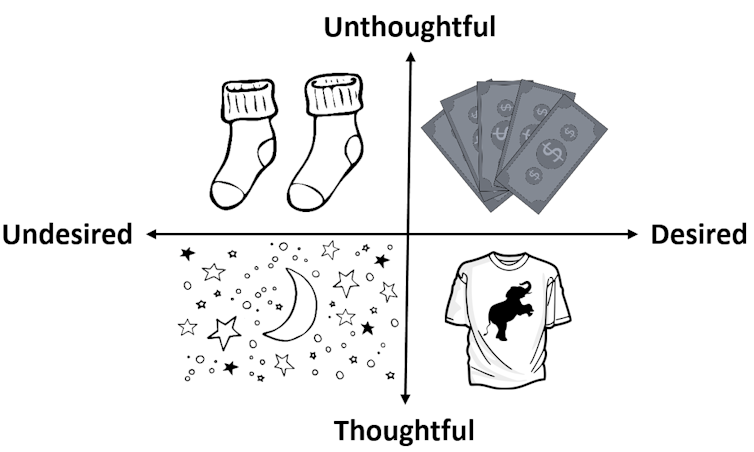
The best kind of gift is one both desired by the recipient and is thoughtful. For me this might be a custom t-shirt printed with an in-joke.
The worst kind of gift, on the other hand, is neither desired nor thoughtful. For me, this might be a pair of socks.
Then there are desirable but unthoughtful gifts, such as cash, and undesired but very thoughtful gifts, which for me would be officially naming a star in my honour. I love astronomy but this just isn’t for me.
Read more: We're not as Grinchy as we think: how gift-giving is inspired by beliefs-based altruism
Navigating Social Risk
This is why buying a gift can be so anxiety-inducing. There is a “social risk” involved.
A well-received gift can improve the quality of relationship between giver and recipient by increasing feelings of connection, bonding, and commitment. A poorly received gift can do the opposite.
This has been shown by research. A 1999 study asked 129 people to describe in detail a situation in which they had received a gift. Ten people reported gifts that weakened the relationship. Two people actually ended the relationship after the gift.
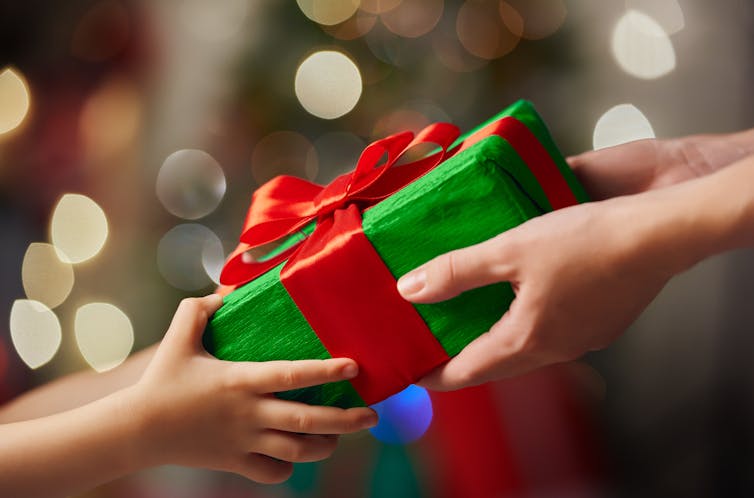
How Much Does The Thought Count?
Research also shows people tend to overestimate their ability to discern what a recipient will like, and therefore what gifts will lead to a strengthening of the relationship.
A 2011 study asked respondents to think back to either their own wedding or a wedding to which they were a guest. Gift recipients were asked to rate how appreciative they were of gifts either listed on the gift registry or not. Guests were asked to estimate how well they thought gifts were received.
Gift recipients strongly preferred gifts on their list. However, gift givers tended to wrongly assume unsolicited gifts (those not on the registry) would be considered more thoughtful and considerate by their intended recipients than was the case.
Gift givers also tend to overestimate that more expensive gifts will be received as being more thoughtful. But it turns out gift recipients appreciate expensive and inexpensive gifts similarly. In reality, they actually feel closer to those who give convenient gifts, such as a gift certificate to a nearby ordinary restaurant rather than a distant upscale restaurant.
The Psychology Of Cash
What about simply giving cash?
After all, the recipient can buy exactly what they most desire. But cash is considered unthoughtful because it requires no effort and seems to put a dollar value on the relationship.
In Chinese cultures, cash is given in a red envelope to decommodify the money by literally enveloping it in a symbol of good luck. If you’re going to give cash, think about doing it creatively, such as through clever origami or in some other way that personalises it. This will show a degree more thoughtfulness.
The closest alternative to cash is the gift card. The main benefit is that it requires some effort and allows some thoughtfulness in the selection of which gift card to purchase. Nevertheless, the research suggests the gift card is often reached for as a last resort.
Read more: No presents, please: how gift cards initiate children into the world of 'credit'
The Best Gift Of All
If you want to have a wrapped gift under the Christmas tree and haven’t been tipped off on exactly what the recipient wants, go for something practical with a personalised touch. If you really are struggling, then a thoughtful card together with a flexible gift card is a safe option.
But the main takeaway from the psychology of gift-giving research is that, if your goal is to strengthen your relationship with the recipient, give them an experience.
A 2016 study asked people to give a friend either a “material” or “experiential” gift (valued at $15). Material gifts included things such as clothing. Experiential gifts included things such as movie tickets. Recipients of the experiential gifts showed a stronger improvement in relationship strength than recipients of the material gifts.
The most precious gift you can give a loved one, though, is actually quite simple: quality time. In a 2002 study involving 117 people, more happiness was reported from family and religious experiences than from events where spending money and receiving gifts was the focus.
So this Christmas, grab a drink, sit down and have a conversation. Get to know each other. If done well, come next Christmas, you’ll both know exactly what gift to get each other.![]()
Adrian R. Camilleri, Senior Lecturer in Marketing, University of Technology Sydney
This article is republished from The Conversation under a Creative Commons license. Read the original article.
Beauty And Audacity: Know My Name Presents A New, Female Story Of Australian Art
November 17, 2020
By Joanna Mendelssohn, Principal Fellow (Hon), Victorian College of the Arts, University of Melbourne. Editor in Chief, Design and Art of Australia Online, University of Melbourne
Review: Know My Name: Australian Women Artists 1900 to now, National Gallery of Australia
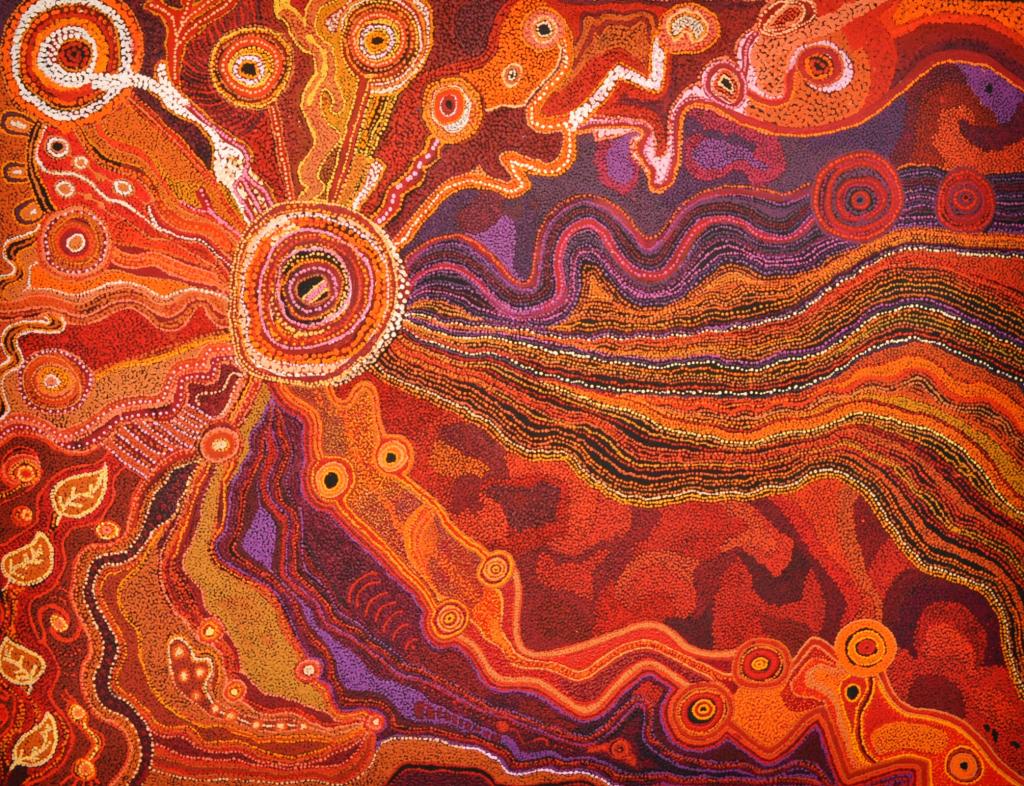
Tjungkara Ken, Sandra Ken, Yaritji Young, Freda Brady and Maringka Tunkin, Seven Sisters, 2018. National Gallery of Australia, Canberra purchased 2020
Know My Name is more than an art exhibition, although the exhibition attached to its launch is large, complex and wonderful. Described as a “gender equity initiative”, it is part of a strategy by NGA Director Nick Mitzevich to move towards a culture of inclusion in both collecting and exhibiting.
The exhibition begins with a massed display of portraits, hung like a 19th century salon, almost like an honour guard. The subjects are all people with a purpose.
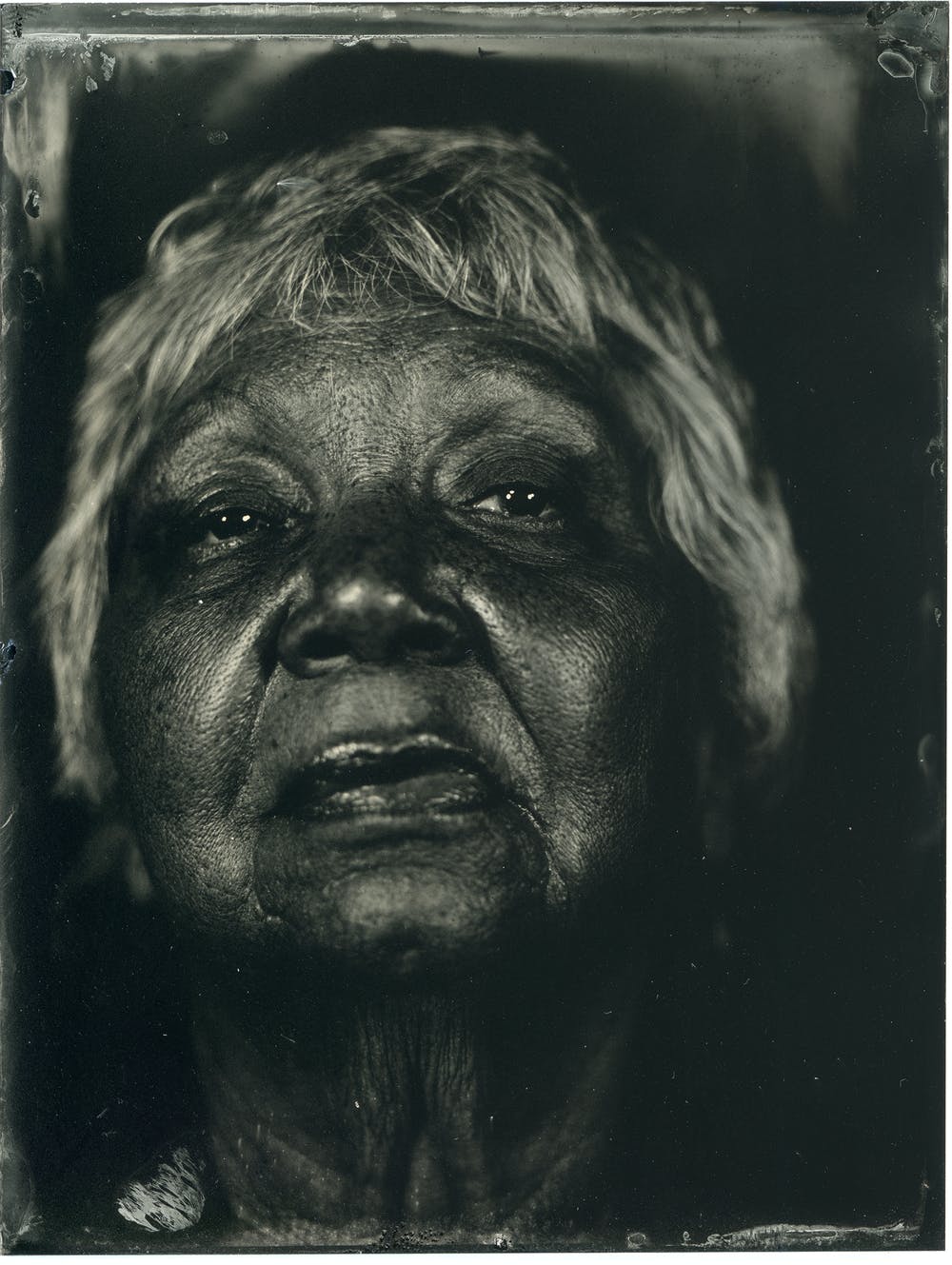
Brenda L Croft, Gurindji/Malngin/Mudburra People; Anglo-Australian/Chinese/German/Irish Heritage, Matilda (Ngambri/Ngunnawal), 2019. National Gallery of Australia, Canberra purchased 2020
Brenda L. Croft’s intense monochrome portrait of Auntie Matilda House, the Ngambri-Ngunnawal elder, provides a welcome to country. Nearby, Julie Dowling’s iconic, heart-breaking portraits of her family and community’s grief and loss are placed alongside Violet Teague’s Dian Dreams (1909), a painting with a subject who does not need to bask in anyone’s approval.
Some of the works are well known, others less so. Inevitably, the eye is drawn to Grace Cossington Smith’s The Sock Knitter (1915), the work that first placed women artists at the centre of Australia’s art history.
A century before the first Countess Report released its meticulously researched data on the inequitable treatment of women artists, The Sock Knitter was exhibited at the 1915 Royal Art Society of NSW’s annual exhibition. It was ignored, as was the artist, long regarded as a “lady amateur” flower painter.
The Sock Knitter remained in her studio until the late 1950s when it was discovered by Bernard Smith. Cossington Smith may now be recognised as perhaps Australia’s most important modernist artist, yet she spent most of her life in relative obscurity.
The exhibition is Mitzevich’s signal of a change in the NGA’s collections policy to one of affirmative action. Previously, the gallery only held 25% of works by women artists. What surprised him, he has said, is that despite the increased profile of female artists in the last four decades, the proportion of works by living women artists collected by the gallery over that time was less than in earlier years.
The gallery’s first director, James Mollison, may not have been prejudiced in favour of women, but he was not prejudiced against us. Key works by Rosalie Gascoigne, Joy Hester, Tracey Moffatt and Emily Kame Kngwarreye were all bought on his watch. Many more recent works in the exhibition come from elsewhere.
It could be argued that it is not possible to reconfigure Australian art using only the work of one gender. There is, of course, an easy answer to this. For many years, almost all the art on public display was by men.
Relationships, not history
The beauty and the audacity of this exhibition is that it ignores any attempt to slot artists into specific movements. Instead, curators Deborah Hart and Elspeth Pitt have created what they rightly call “a new story of Australian art”, one of relationships, not history.
It is a magnificent, encircling argument of solidarity and inclusion. Works are grouped by thematic concerns; crossing cultural and chronological barriers. Traditional hierarchies between high and low art are dissolved.

Know My Name doesn’t slot artists into specific movements. It is a new story of Australian art. National Gallery Australia
After the salon-style entrance, the visitor moves on to different interpretations of that great creation myth, the Seven Sisters. The space is dominated by the gallery’s recent commission, a large installation by the Tjanpi weavers. It is joined by paintings on the same subject, including works by the Ken sisters from the Anangu Pitjantjatjara Yankunytjatjara Lands. The message is of collaboration and generosity.
In the following room, Connection with Country, artists from different generations and cultures are linked to land and the environment. This includes a wall of Utopia batiks, a reminder that Jeanie Pwerle, Rosie Kngwarray and Emily Kame Kngwarreye first worked purely in textile.
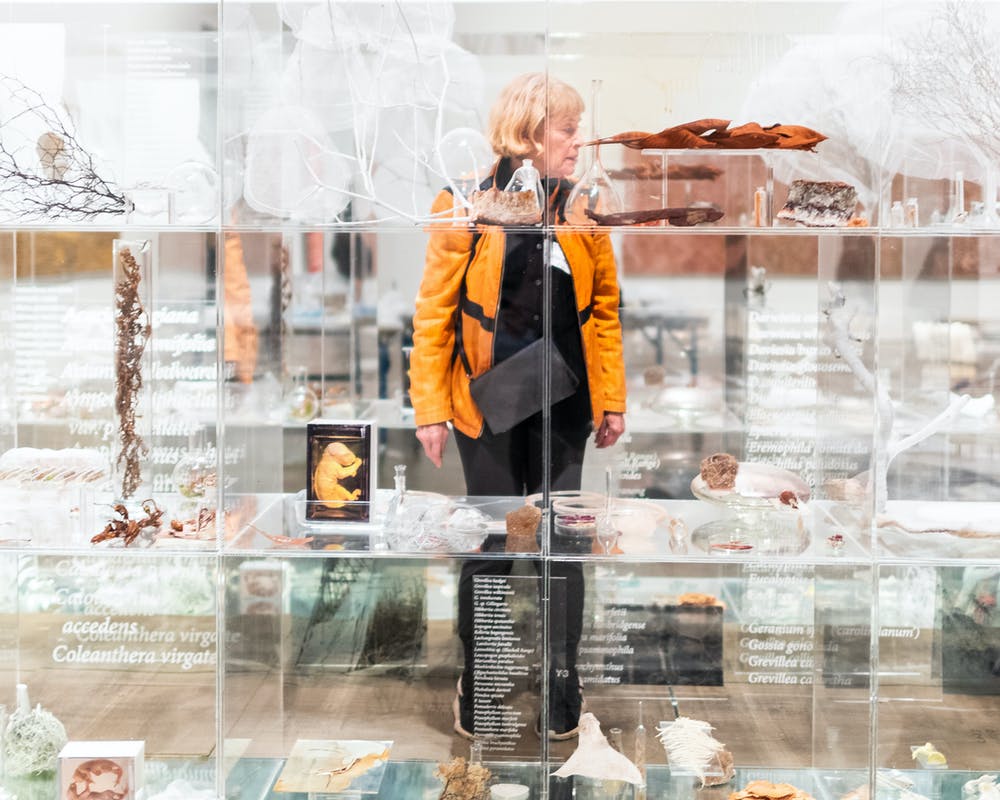
Installation view of Janet Laurence’s Requiem 2020, Know My Name: Australian Women Artists 1900 to Now. National Gallery of Australia, Canberra
Emily Kame Kngwarreye’s great painting Untitled (Alhalker), (1992), from the collection of the Art Gallery of New South Wales, tells of her country.
Rosalie Gascoigne’s Feathered fence evokes the sparse beauty of the landscape around Canberra, while Janet Laurence’s installation, Requiem, mourns the loss of natural life. Fiona Hall’s Tender, with its bird nests woven from shredded American dollar bills, provides a stern reminder of the transience and folly of money.

Rosalie Gascoigne, Feathered fence, 1979 National Gallery of Australia, Canberra, gift of the artist 1994. © Rosalie Gascoigne/Copyright Agency
Despite the cavernous exhibition spaces it is possible to enjoy the intimate pleasure of getting up close and personal to Bea Maddock’s epic etched panorama, Terra Spiritus … with a darker shade of pale (1993-98), a painstakingly recorded circumnavigation of Tasmania, linking original names to those imposed on the land by the British invaders.
Then there are Narelle Jubelin’s exquisite reworkings of colonial photographs, all in petit point.
A change of tempo
In the room titled Collaboration and care, the tempo changes. A large wall is covered with activist posters and more incendiary works, including Phoenix (Frances Budden)‘s Relic, a savage, embroidered critique of Catholicism and its regard for women.
The sense of outrage and protest that permeates this wall is matched by R.E.A.’s Resistance rework of the Aboriginal flag hanging opposite.
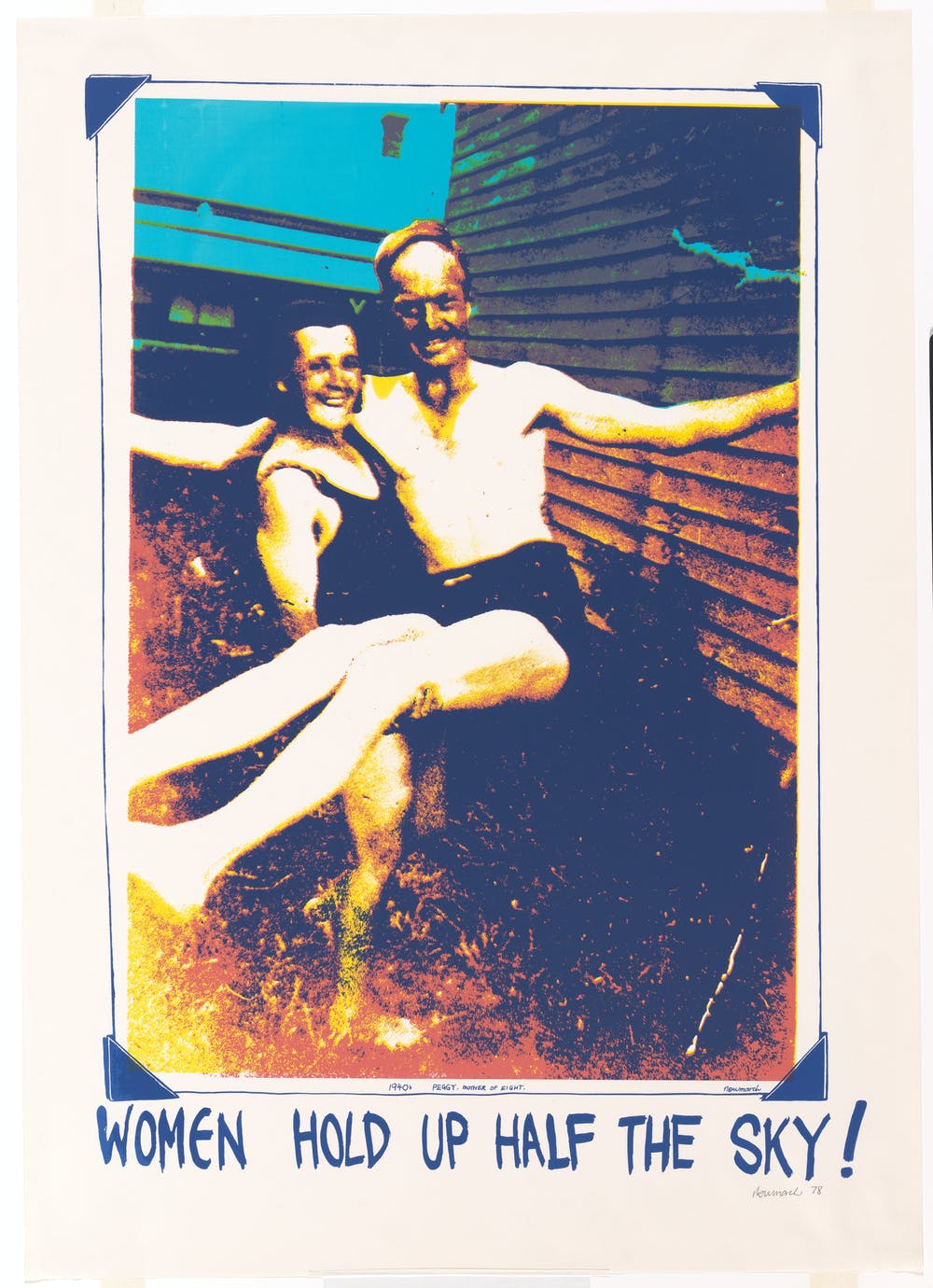
Ann Newmarch, Women hold up half the sky, 1978. National Gallery of Australia, Canberra, gift of the artist 1988
These polemicist works are countered by the tranquillity of the Westbury Quilt, made by the Misses Hampson in northern Tasmania in the early years of last century. The quilt’s small red and white squares, embroidered with details of daily life, are centred on an idealised vision of Queen Victoria.
Although they are exhibited in a different section, this quilt has perhaps more in common with Esme Timbery’s Shell worked slippers (from 2008) than other exhibits. They both speak of the domestic scale of traditional women’s work, and the way art can infiltrate into everyday spaces.
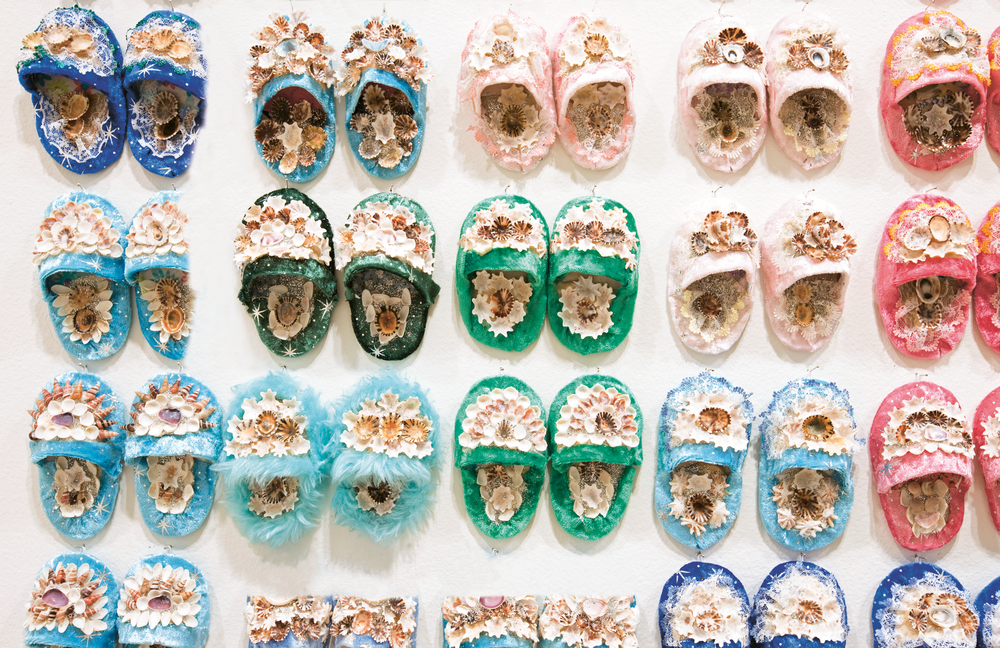
Esme Timbery (Bidjigal people), Shellworked slippers 2008. Museum of Contemporary art, Purchased with funds provided by the Coe and Mordant families
There is a sense of familiarity in the room, Colour, Light and Abstraction, as the contribution of women artists to Modernism has been well recorded. Here are old favourites by the pioneers – Dorrit Black, Cossington Smith, Grace Crowley, Klytie Pate – informing later generations including Margaret Worth, Janet Dawson, Virgina Cuppaidge and Melinda Harper.

Virginia Cuppaidge, Lyon, 1972. National Gallery of Australia, Canberra, gift of the artist 2012 © Virginia Cuppaidge
The room titled Performing Gender presents the full suite of Julie Rrap’s Persona and Shadow, manipulated photographs based on both her body and the paintings of Edvard Munch.
These, along with Anne Ferran’s magnificent black and white Scenes on the Death of Nature, and Tracey Moffatt’s Something More, are probably the most familiar works for those who came of age in the 1980s.
Remembering is the most sober of rooms. Kathy Temin’s memorial gardens installation honours loss of family with faux fur architecture. Lindy Lee’s bronze fragments remind us that we are but specks in the universe, while flight research, Rosemary Laing’s series of photographs, shows bridal figures floating in a clear, blue sky.

Kathy Temin, Pavilion garden 2012, Purchased 2017. National Gallery of Australia, Canberra
The exhibition is so big only half of it is on display now. The second half is planned for July next year (it was preceded by an online conference). That one may be more confronting as it will include the in-your-face works of Pat Larter, for many years better known as the wife of Richard Larter.
Twenty four years after her death she is finally being honoured with a small survey exhibition at the Art Gallery of NSW.
There is still a lot of catching up to do.
__________________________
This Review was published first in The Conversation.
Watch your ums and uhs, spoken communication is about more than words

There’s been a lot of talk lately. In briefings, speeches and video meetings. In the coming weeks, there will be celebrations and toasts given. These are opportunities to attend to talk.
In talk, it’s not just words that create meaning.
Nonverbal cues, including stress on key words alongside the use of gaze and gesture, assist us when speaking or understanding others. Verbal cues such as “discourse markers” (for example, “okay”, “so”, “um”, “uh”) also accomplish important work in interaction.
Listeners conventionally associate ums and uhs with broken speech (called “dysfluency” in studies of communication) when speakers self-repair by interrupting themselves to self-correct. They might do this to more clearly express themselves or to conduct a word search. We all do this from time to time.
Yet research suggests ums and uhs also serve a range of other functions in conversation. We know that where they occur in talk, and how they are articulated contribute to meaning.
Like Talking Bullet Points
As well as being associated with repair in everyday speech stumbles or word gaps, ums and uhs mark openings of talk, new topics or a return to topic.
In extended speech, like a public presentation or speech, such markings are important for the listening audience so they can follow the meaning of what is being said. The uhs work like bullet points.
In conversation they also have an important role to play in politeness. The um at the beginning of a speaker’s turn indexes awareness that what is about to be said is “dispreferred”; that is, delicate or not what a listener expects or wants to hear, or something that the listener might be inclined to reject.

Read more: Anxious about speaking in online classes and meetings? Here are 7 tips to make it easier
Talk In Action
The best way to study verbal cues is to transcribe talk in micro detail. This exercise can show why presentations with more ums and uhs are likely more frustrating to listen to.
Discourse transcription is time-consuming, so is done in short segments. A transcribed sample of the first two minutes and 40 seconds of a medical briefing by Victoria’s Deputy Chief Health Officer Allen Cheng, generated a total of 34 occurrences of “um” and 21 of “uh”.
Eleven ums marked topic changes. As per previous research, when marking a beginning or new topic, these were produced loudly, and were followed by pauses as per below which marked the opening of the talk:
um [pause] I might just take the opportunity to explain how …
This is a classic use of um to mark the beginning of talk. It has also been found in academic lectures or seminars and in telephone openings to mark the reason for the call.
Talk-back radio provides examples of um occurring after the greeting, as illustrated in this example from ABC Melbourne radio with host Virginia Trioli.
Caller: How’re you going?
Virginia: Good thanks.
Caller: Ummm, I was picked up for speeding …
Meanwhile, many of the ums and uhs (71%) in Professor Cheng’s briefing occurred in repair environments including a word search, as in the following where the um is stretched:
… it’s not an exact um [pause] quantification but it is um uh — it is an indication …
Here the first um is followed by a pause, while the second co-occurs with uh before the repetition of it is. These features create dysfluent speech. However, in both cases there is a successful outcome and return to topic after a momentary interruption.
Three samples from politicians — Victorian treasurer, Tim Pallas, NSW premier Gladys Berejiklian, and Victorian premier Dan Andrews — show seasoned public communicators.
There was a greater number of uhs and ums in Tim Pallas’s speech (45) than in the premiers’ (25 and 10 respectively). Pallas was reporting on a range of financial support measures, and like Professor Cheng’s, whose talk was highly technical, this content was dense in terms of vocabulary. So, there was a greater number of word searches as both speakers worked to make their talk accessible.

Read more: In defence of jargon – it might be infuriating but it also has its uses
Um and uh have been found to facilitate comprehension. They guide the listener through the overall format of the talk. However, research also suggests that too many ums and uhs can affect listener perceptions about speaker credibility or how prepared they are.
On this basis, Daniel Andrews is the most effective communicator, although accessible content in his briefing was a factor.
Read more: 3 ways to get your point across while wearing a mask – tips from an award-winning speech coach
Speaking Is Complex And Tough Under Pressure
Speakers can improve the effectiveness of their communication; for example, through awareness of their ums and uhs, or by slowing down.
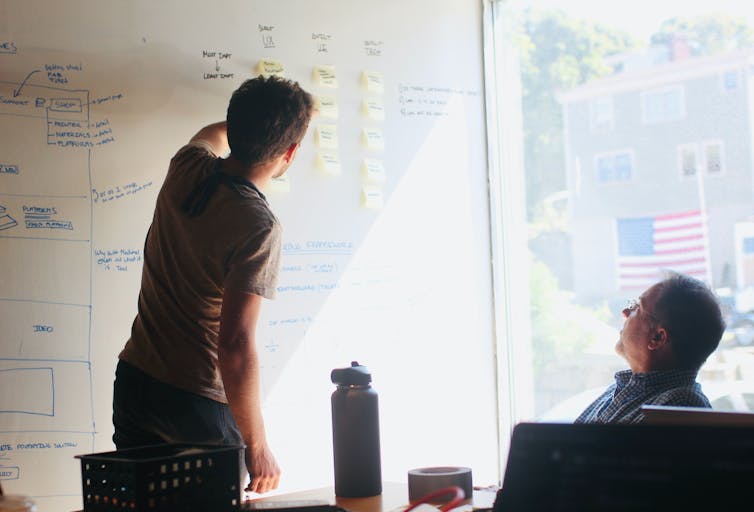
But we must remember that spontaneous extended talk to an audience — such as in a speech — is highly complex.
Speakers need to plan what they are going to say, watch the audience, and keep their talk going under time pressure. In a challenging public and televised space, they also need to be accurate, and choose words carefully.
Um, not talking under that kind of pressure? Uh I’ll … I’ll toast to that.![]()
Anna Filipi, Senior lecturer, Monash University
This article is republished from The Conversation under a Creative Commons license. Read the original article.
There's a big problem with the Murdoch media no one is talking about — how it treats women leaders
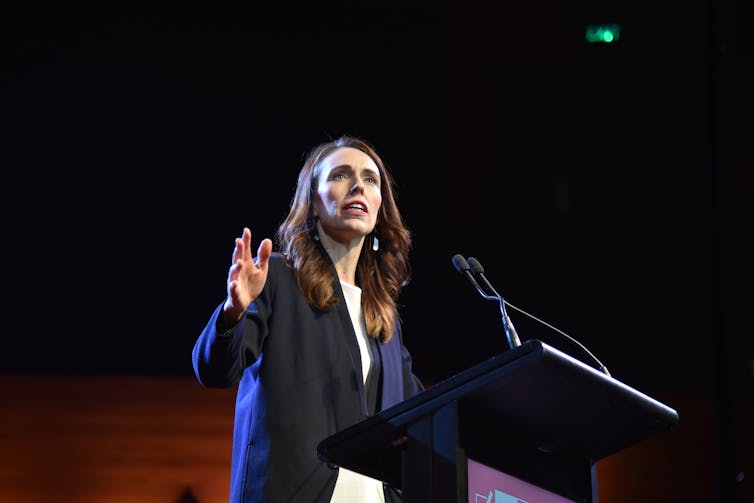
Rupert Murdoch’s News Corp has long dominated the Australian media landscape, wielding great political and cultural influence.
Former prime minister Kevin Rudd’s record-breaking petition calling for a royal commission into Australian media ownership has once again put this issue in the spotlight. It has gained more than 500,000 signatures and led to a Senate inquiry into media diversity.
Read more: Paper chase: why Kevin Rudd's call for a royal commission into News Corp may lead nowhere
Rudd has described News Corp as a “cancer on democracy”, while fellow former Prime Minister Malcolm Turnbull has labelled it “pure propaganda,” and slammed its “campaign on climate denial”. Labor’s Julia Gillard, has also made similar claims.
However, these discussions fail to consider how the Murdoch press is particularly hostile towards women politicians.
How Does The Murdoch Press Represent Women?
While studying media representations of women in politics, I’ve noticed a stark difference in Murdoch press coverage of men and women leaders.
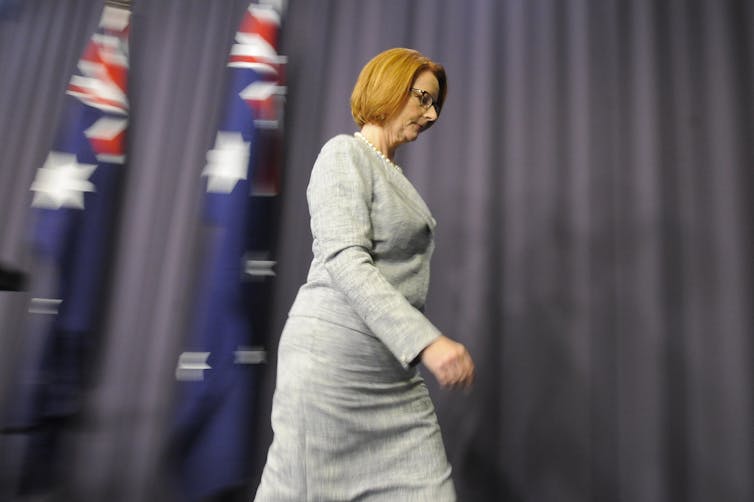
My research, recently published in Feminist Media Studies, compared Australian media portrayals of Gillard’s prime ministerial rise with that of Helen Clark’s in New Zealand. Both leaders experienced a sexist focus on their gender, appearance and personal lives. But it was far more frequent and intense for Gillard.
My research suggests two key explanations for this contrast: the different political contexts they operated in, and the dominating influence of the Murdoch press in Australia versus its absence in New Zealand.
As Rudd has argued, the Murdoch press is hyper-partisan and ideologically driven, “blending editorial opinion with news reporting”. News Corp is also known to reward Murdoch’s allies, while damaging his enemies.
Yet this has notably gendered ramifications. Murdoch’s conservative morality, traditionalist values, and opposition to left-wing movements appear constantly in his newspapers, making them uniquely hostile to women.
Read more: Courting the chameleon: how the US election reveals Rupert Murdoch's political colours
Gillard did not simply threaten the political status quo as Australia’s first woman prime minister. As an unmarried, child-free, atheist woman from the left of the ALP, she also threatened Murdoch’s conservative ideology. His newspaper therefore portrayed Gillard in a highly gendered — even misogynistic — manner intended to undermine her. This was evident in the criticisms of her fashion choices, such as a headline condemning her “technicolour screamcoat” in The Daily Telegraph.
Things Have Not Changed Since Gillard’s Days
Though it’s been ten years since Gillard became prime minister, not much has changed. News Corp papers continue to attack women in politics, especially if they are from the left.
Queensland Labor Premier Annastacia Palaszczuk is another seasoned veteran of News Corps’ sexist coverage. This includes the Sunshine Coast Daily’s 2019 front page image, which featured Palaszczuk in crosshairs with the headline, “Anna, you’re next”.
More recently, The Courier Mail labelled her dealings with Liberal NSW Premier Gladys Berejiklian over border closures, “schoolgirl behaviour”.
Even Liberal women aren’t immune from sexist coverage. Julie Bishop, the Coalition’s former foreign affairs minister, was likened to the power-hungry “Lady Macbeth” by The Australian for her 2018 leadership tilt. She was also ridiculed by the same paper for calling out the Liberal party’s sexist bullying culture.
Berejiklian has also endured sexist reportage, particularly during the recent scandal over her relationship with disgraced former NSW MP Daryl Maguire. One Daily Telegraph article waxed lyrical about her supposed “wedding fantasy”, a “feminine albeit old-fashioned thing to do” which, they argued, might have kept a workaholic like Berejiiklian “sane”.
However, the News Corp’s partisan bias towards the Coalition is also evident in these stories. Rather than holding Berejiklian to account, the Murdoch press largely ran sympathetic stories about the premier’s behaviour. This starkly contrasts with the onslaught of sexist coverage Gillard received during the AWU affair, which haunted her for the rest of her term in office.
International Leaders Also Under Attack
Australian women aren’t the only targets. The globally popular New Zealand Prime Minister Jacinda Ardern has frequently borne the brunt of biased News Corp coverage.
In the lead up to the 2020 New Zealand election, columnist Greg Sheridan argued Ardern doesn’t live up to the hype, claiming in The Australian,
part of the international Jacindamania comes from the fact she is a young left-wing woman who gave birth in office and took maternity leave.
Sheridan also labelled her government’s COVID-19 response and progressive style of politics as “inherently authoritarian” that also “enjoys bossing people around”.
When Ardern won the election in a historic landslide, The Australian responded with a piece describing her as “grossly incompetent” and “the worst person to lead New Zealand through this economic turbulence”.
Notably, the clear bias here drew criticism from the New Zealand press.
In August, Johannes Leak’s cartoon in The Australian, also received international condemnation for its misogynistic and racist depiction of vice-presidential nominee Kamala Harris.
Don’t Forget Gender
It is clear the Murdoch press has a “woman problem”.
This poses a real obstacle for women in politics, especially those who oppose Murdoch’s conservative ideology. But it also broadcasts a message about women’s roles and place in society more generally — that no matter how privileged or powerful a woman might be, it’s nearly impossible to escape sexist commentary and the objectifying male gaze.
This is why it is so essential to hold the Murdoch press to account in a specifically gendered light.![]()
Blair Williams, Associate Lecturer, School of Political Science and International Relations, Australian National University
This article is republished from The Conversation under a Creative Commons license. Read the original article.
Retirement Income Review Final Report
- The Age Pension, compulsory superannuation and voluntary savings results in most Australians achieving adequate retirement outcomes.
- The Age Pension provides a strong safety net to those who retire with small superannuation balances.
- The Age Pension reduces income inequality among retirees, as low income retirees receive the largest Age Pension payments.
- Superannuation assists middle income earners to smooth their income over their lives. Without compulsory superannuation, middle income earners would not save enough for retirement.
- More efficient use of savings in retirement can have a bigger impact on improving retirement income than increasing the Superannuation Guarantee (SG).
- The weight of evidence suggests an increase in the SG rate will result in lower wages growth, impacting standards of living.
- There are a number of ways that individuals can significantly boost their retirement incomes without having to increase their superannuation contributions, including more effectively drawing on superannuation assets, achieving better-after-fee returns and accessing equity in their home.
- Voluntary contributions provide flexibility for those outside the compulsory system to contribute to superannuation, such as the self-employed and those who have had interrupted working careers.
- The Government’s early release policy, enabling Australians to access up to $20,000 of their superannuation across two years, has cushioned the economic impact of COVID-19.
Australian Residential Aged Care Quality Indicators
How Far Do People Move To Access Aged Care?
Does Air Pollution Increase Women's Risk Of Dementia?
91 Year Old Paraglider Walks Away From Stack
Change To Centrelink And Aged Care Nominee Arrangements
- your Centrelink correspondence nominee and aged care nominee are the same person
- you have a Centrelink correspondence nominee, but not an aged care nominee.
- have a nominee for aged care, but not Centrelink
- get a Department of Veterans’ Affairs (DVA) payment.
Veteran Gold Card Guaranteed On The Beaches
Ageing In Place: Home Is Where Our Heart And Health Is
$438m Shoalhaven Hospital Redevelopment Fast-Tracked
- Enabling works, including services diversion and potential in-ground works; and
- Design works for the redevelopment, including clinical design.
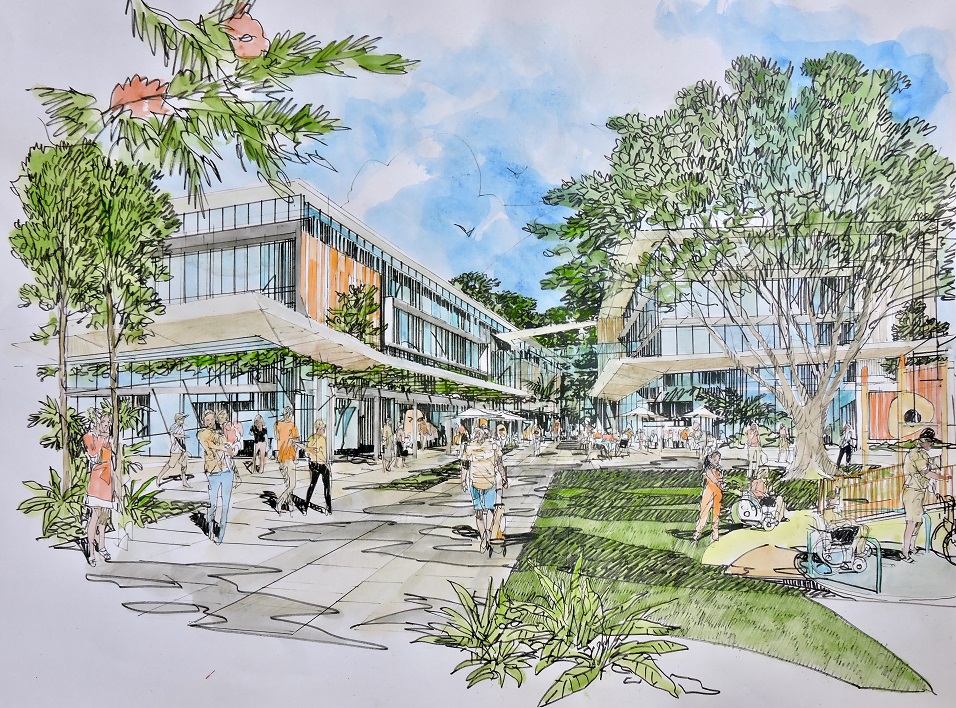
Transport Infrastructure Program Driving Greater Sydney Growth
- $1.6 billion ($1.5 billion recurrent and $49 million capital) for bus services throughout NSW, including regional and metropolitan bus services, school services and funding of new and replacement buses;
- An additional $192 million for the Transport Access Program to upgrade train stations and ferry wharves to make them more accessible including new lifts, ramps and footbridges. This adds to the existing $885 million that was committed over four years in last year’s Budget;
- Almost $545 million ($4.2 billion over four years) to commence construction on the Sydney Gateway project and continue planning and preconstruction activities for the M6 Stage 1 Extension;
- $356 million ($5.7 billion over four years) for the planning and preconstruction for the Western Harbour Tunnel and Warringah Freeway Upgrade as part of the Western Harbour Tunnel program;
- $197 million over the next four years for the Prospect Highway upgrade (State and Federal funded) including $13.9 million in 2020-21;
- $149 million over the next four years for the Memorial Avenue upgrade, including $37 million in 2020-21;
- $120 million over the next two years to match the Federal funding commitment for metropolitan pinch points;
- More than $1.1 billion ($4 billion over the forward estimates) to continue to deliver More Trains, More Services for increased rail services, and more frequent and additional services on the Illawarra, Airport and South Coast lines;
- Fully funding the delivery of commuter car parks at Edmondson Park, Leppington, Warwick Farm, West Ryde, Emu Plains, Schofields, Revesby, Riverwood, North Rocks, Engadine, Hornsby, Jannali, Wentworthville, Winston Hills, Casula, Tuggerah and Beverly Hills; and
- Almost $710 million in walking and cycling infrastructure over the next four years, bringing the NSW Government’s total investment to almost $1.1 billion – the largest in the State’s history.
Technology Lets Clinicians Objectively Detect Tinnitus For First Time
Wollongong Harbour Master Plan Released
Melbourne Children Mount A COVID-19 Immune Response Without Detection Of The SARSCoV-2 Virus
Go (Over) Easy On The Eggs: 'Egg-Cess' Consumption Linked To Diabetes
- 33.65 g/day in Europe
- 28.43 g/day in America
- 20.56 g/day in Asia
- 21.45 g/day in the world
- 18.20 g/day in Oceania (including Australia)
- 5.93 g/day in Africa.
Disclaimer: These articles are not intended to provide medical advice, diagnosis or treatment. Views expressed here do not necessarily reflect those of Pittwater Online News or its staff.